An Epic Namibia Itinerary (Plus Map, Tips & Best Places to Visit)
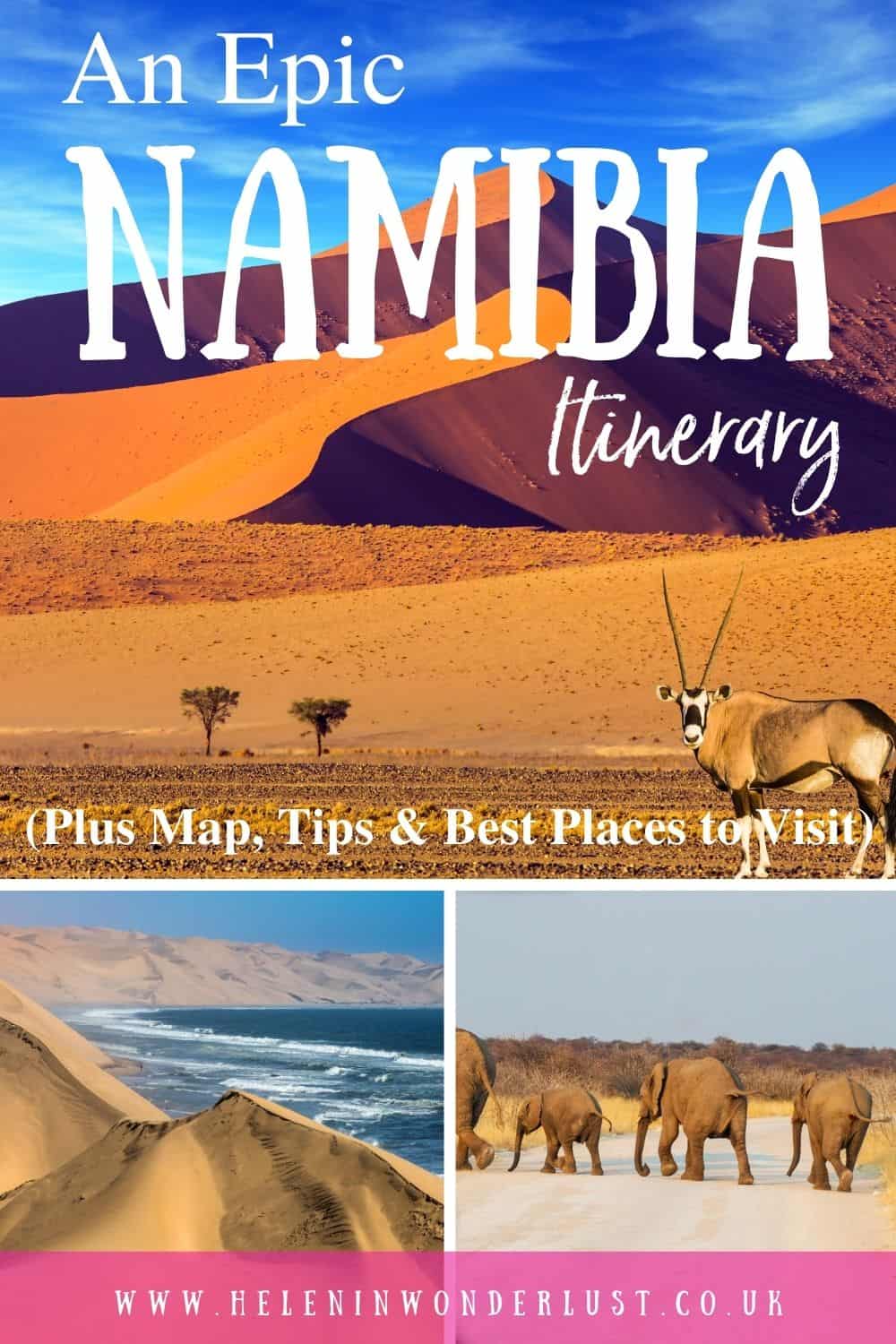
Planning your Namibia itinerary? Well, you’re in for an incredible adventure!
I’ve been to Namibia a few times NOW and it’s one of the most unusual, fascinating and vast countries I’ve ever visited. With other-worldly scenery, ethereal, starry skies, stunning coastlines, colossal sand dunes, vast deserts, incredible wildlife and epic adventure activities – Namibia has it all!
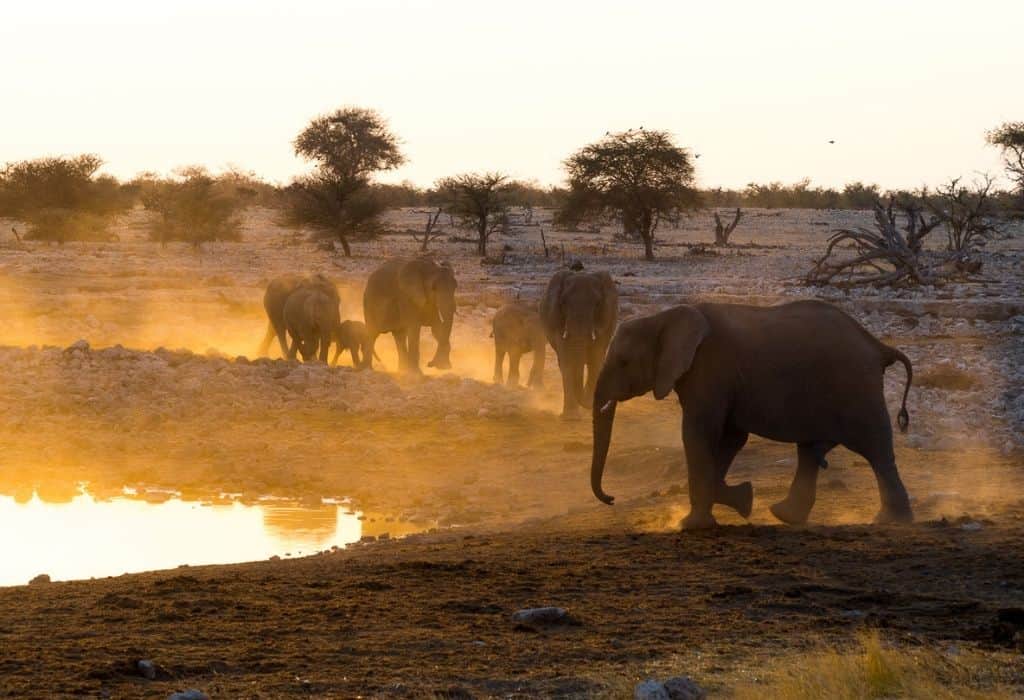
Please Note: Some of the links in this post are affiliate links, which will earn me a small commission at no extra cost to you. Affiliate sales help with the running costs of this site, so thank you for your support!
An Epic Namibia Itinerary (Plus Things to See & Do)
For the purposes of this Namibia itinerary, I’m going to start and end in the capital Windhoek, which is right in the middle, going around in a loop clockwise (you can also do this trip in reverse) as this probably makes the most sense as most people will usually fly in and out of Windhoek (Hosea Kutako International Airport) if doing a Namibia only trip.
Or, if you are driving in from/to South Africa, Zambia, Zimbabwe or Botswana, you can easily adjust the itinerary to suit your plans and I’ve suggested a few alternative routes at the bottom of the post.
Under each section, I’ve recommended how many days I recommend spending in each place. This is just a guideline though and you can, of course, spend a shorter amount of time (if practical and physically possible) in the area or longer if you want more downtime or have more time.
Just be aware that distances between the destinations can be long, so give yourself enough time to get everywhere!
So let’s hit the road and plan your awesome and epic Namibia itinerary…
The Best of Namibia Itinerary – My Absolute Must Visits
- Day 1 – 2: Windhoek
- Day 3 – 4: Namib Naukluft National Park
- Day 5 – 7: Swakopmund
- Day 8: Spitzkoppe
- Day 9 – 10: Damaraland
- Day 11 – 12: Etosha National Park
- Day 13: Voigtland Lodge
- Day 14: Depart
The above is similar to the itinerary we follow on the Rock My Namibia Adventure tour. But if you have more time, you could add the following places to your Namibia itinerary:
- Quiver Tree Forest: 1 – 2 Days
- The Kalahari Desert: 1 – 2 Days
- Fish River Canyon: 1 – 6 Days
- Aus & Luderitz: 1 – 2 Days
- Skeleton Coast: 1 – 4 Days
- Opuwo (Kaokoland): 2 Days
- Epupa Falls: 1 – 2 Days
- Waterberg Plateau: 2 – 5 Days
- Caprivi Strip: 2 – 6 Days
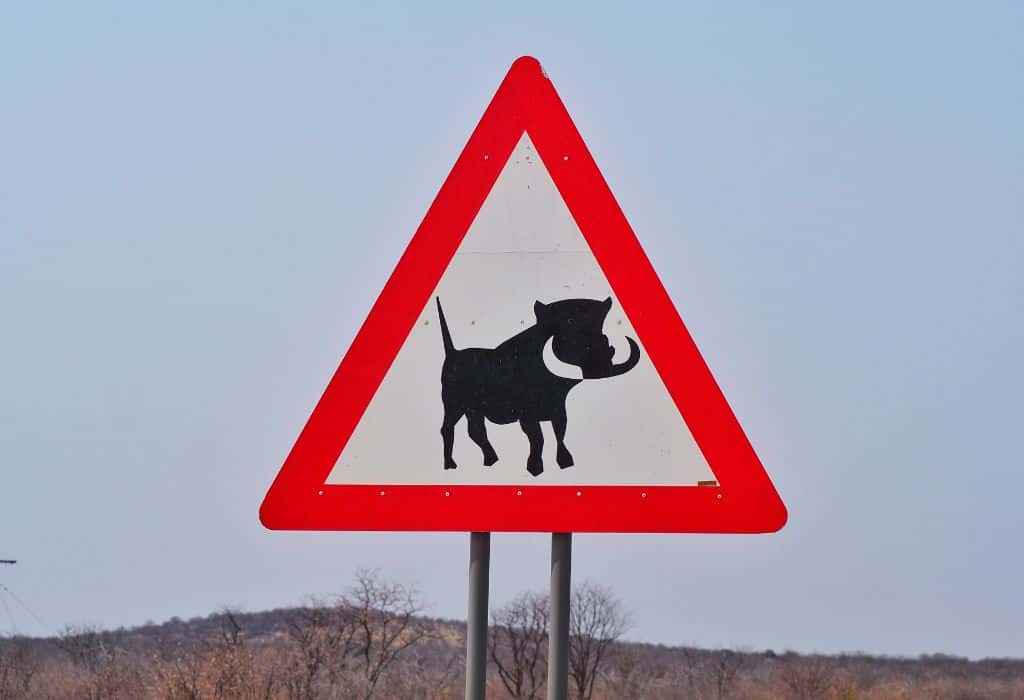
How To Travel Through Namibia
The best way to travel around Namibia is with your own transport – either by taking a Namibia tour or self-driving. Flying is an option, but it’s expensive and you’ll miss out on some of the best bits of Namibia.
I love backpacking through Africa, however, Namibia is not the best place for it as public transport is more scarce and the main attractions are often places that are difficult to get to without your own transport.
That’s not to say you can’t backpack Namibia, but if you don’t have your own transport, be prepared to spend a lot of time figuring out how to get from A to B, to cut some things out or to take some short tours to the more remote places.
I run group tours in Namibia and there are also plenty of overland companies and private safari companies that can organise trips for you.
If you want to rent a car, there are numerous companies (such as Namibia 4×4 or Bushlore) that also rent camping equipment and offer backup support. I would also suggest getting a 4×4 as some of the roads/destinations can be difficult without one.
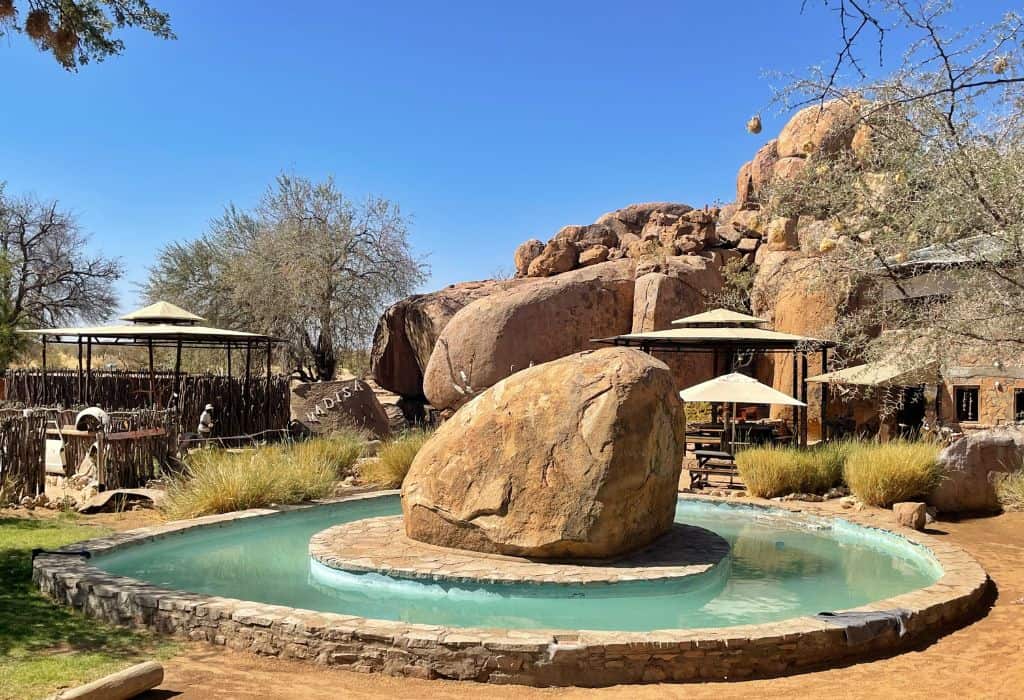
Where to Stay in Namibia
There are tons of great places to stay in Namibia, from cool campsites to luxurious lodges. Some of the nicer lodges also have camping facilities, meaning you can camp, but use the lodge facilities – the best of both worlds.
I’ve suggested some of my favourite accommodations (to suit all budgets) under each destination on this Namibia itinerary below.
My advice would always be to try and book your accommodation in advance. Namibia gets very busy, especially during the European and South African holidays. Driving hours to get to a place and then having nowhere to stay isn’t fun.
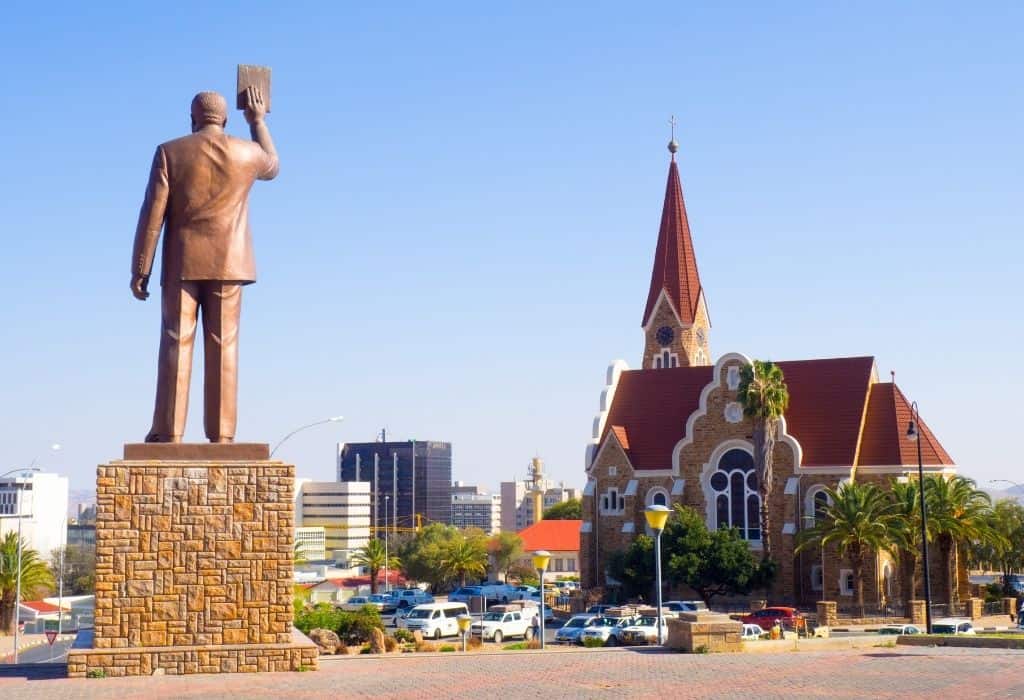
Windhoek
Windhoek is a great place to start your Namibia adventure. It’s the capital city and it has an international airport, plus there are lots of rental car companies if you are self-driving and supermarkets to stock up on anything you need.
Windhoek is one of those cities that is often overlooked as it’s not the most exciting city in the world, however, there are a few cool things to do and places to visit in the area if you have the time.
Where To Stay:
- Urban Camp: Urban Camp have basic tents, luxury tents (all have shared bathrooms), space for camping and a great bar and restaurant (with good vegan options – a rarity in Namibia).
- Chameleon Backpackers: This is a good budget option with nice rooms and a sociable bar. It’s a great place to meet people.
- The Olive Exclusive: A lovely boutique hotel in the city with a great restaurant.
- Voigtland Guesthouse: This is a wonderful lodge and working farm between the city and the airport. The main attraction here is the 3 resident giraffes who like to hang out with the guests. But what sets this place apart, even more, is the excellent customer service, the attention to detail and the fabulous food (the best I had in Namibia).
- GocheGanas: This is a luxury lodge and wellness centre located around 45 minutes outside of the city.
Things To Do:
- Eat and drink at Joe’s Beerhouse, a restaurant/bar and a Namibian institution. They say you haven’t been to Namibia if you haven’t been to Joe’s.
- Take a tour of the city to learn about the history of the country and apartheid in Namibia. I would suggest to include visit Christuskirche, the Katatura Township (go to the market and try kapana – bbq beef with chilli salt – it’s delicious) and the Penduka Women’s Project.
- Visit the Naankuse Wildlife Sanctuary to see the workings of the sanctuary, walk with cheetahs and interact with the baby baboons. Just look at the pictures from our visit – pure joy! You can also stay here too.
- Go shopping at the Namibia Craft Centre. Here you pick up crafts and curios (fabrics, baskets, jewellery, ornaments, books and art etc), plus enjoy the cafe.
Things to Know:
- Whilst the rest of Namibia is pretty safe, Windhoek can be a dangerous city if you put yourself in a dangerous situation (it’s similar to Cape Town in that respect), so you need to keep your wits about you.
- Don’t walk at night, unless going a short distance through a well-lit area and in a group.
- There are also a few ATM scams happening at the moment – if anyone tells you you need to put your PIN in twice or tries to advise you on how to use the ATMs, ignore them. ATMs in Namibia are exactly the same as ATMs at home.
Time Needed:
- I would suggest spending at least a full day in Windhoek city, more if you need to pick up a car and/or camping equipment and get orientated.
- Then if you intend to visit Naankuse or Voigtland to spend time with the animals, you’ll need extra time. You could easily visit Naankuse in the morning, then go to Voigtland in the afternoon and then stay overnight.
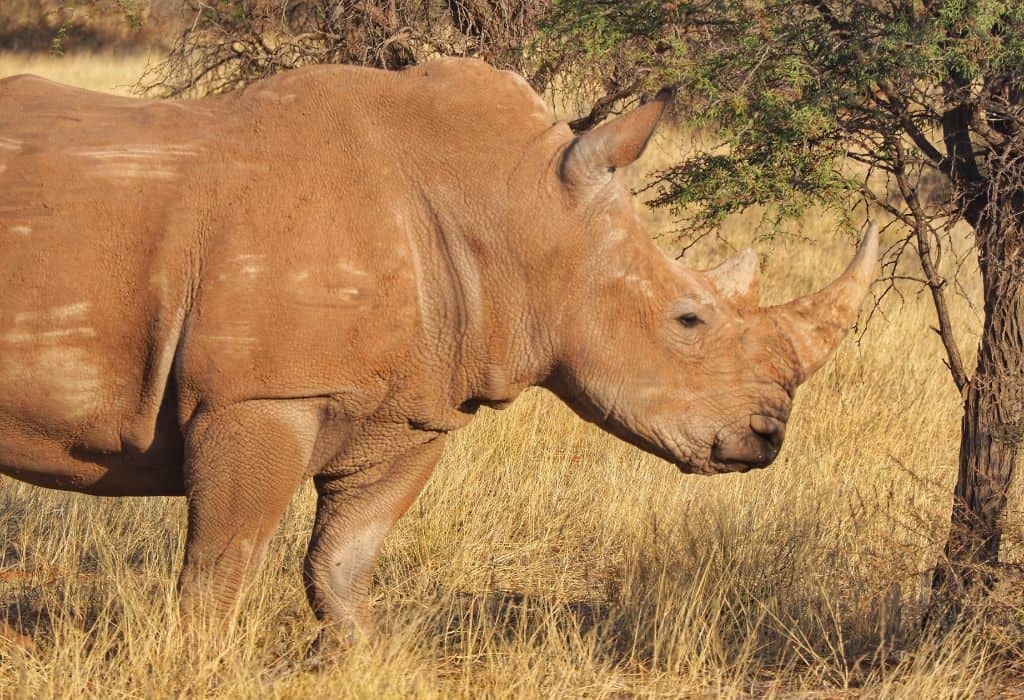
The Kalahari Desert
If you want to break up the journey down to the south of Namibia, the Kalahari is a great place to spend a night or two.
The Kalahari region of Namibia (and Botswana) is where you have the chance to meet and spend time with the San people, also known as the Bushmen, who are one of the oldest tribal groups in the world and the original inhabitants of southern Africa.
Hanging out with the San was one of the most wonderful experiences I’ve ever had, they were so warm, funny and welcoming and it was fascinating to about their traditional survival skills and customs.
I even got healed by a San medicine man in Botswana.
Where To Stay:
- Bagatelle Kalahari Game Ranch: This is a great lodge with camping facilities. They have habituated antelopes (kudu, oryx and springbok), donkeys, meerkats and rhinos that roam the grounds and you can organise lots of activities through them.
Things To Do:
- Book a San Bushmen excursion and learn about their traditional way of life. How they traditionally picked their wives/husbands was particularly interesting! 🙂
- Bagatelle has a state-of-the-art computer-controlled telescope and a resident astronomer who can tell you all about the night sky.
- Get up close with the fastest land animal on Earth, during a cheetah feeding activity.
- Go on a guided horse ride through the reserve. Being on horseback allows you to get pretty close to the wild animals.
- Take a game drive (morning, sundowner and evening) where you will likely see their two resident white rhinos (although they also visited us at our campsite one evening and woke me up munching the grass loudly behind my tent).
- Visit the onsite spa – my friend highly recommends the full body massage.
Time Needed:
- Two nights and one full day is a good amount of time to spend if you don’t have too many activities planned, but you could easily spend more. I enjoyed just hanging out by the pool with the animals wandering about. On the morning we were leaving, the meerkats also paid a visit to the lodge and came right up to us.
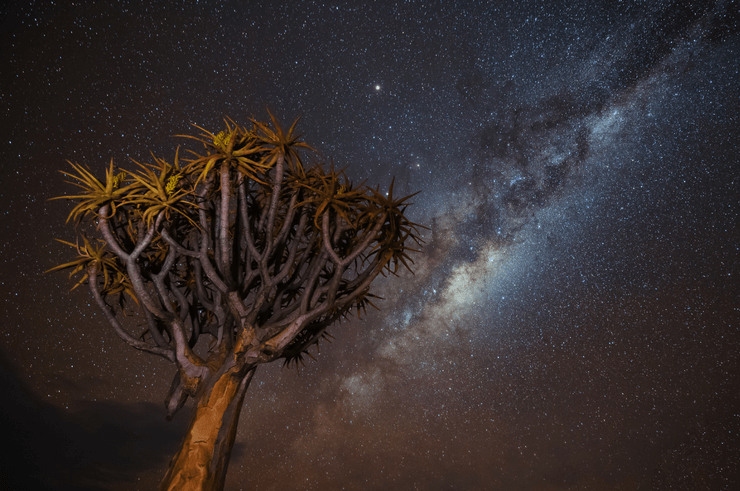
Quiver Tree Forest
Another stop on the way to Fish River Canyon is the Quiver Tree Forest, near Keetmanshoop in the Karas Region.
Quiver trees are strange, yet beautiful trees and so named because the San Bushmen use them to make their quivers, a container used to hold their arrows and darts.
This is also a fantastic spot for photography, especially at sunrise, sunset and at night when the quiver trees make interesting subjects against the brilliant skies. I mean, just check out this incredible video by Marsel van Oosten.
Where To Stay:
- Quivertree Forest Rest Camp: This is a good place to rest your head with rooms and camping facilities.
Things To Do:
- Photograph the quiver trees (night permits need arranging in advance).
- Visit the Giant’s Playground, a group of natural rock formations, boulders perched on top of each other as though placed there by giants.
Time Needed:
- I’d suggest 1 – 2 days. 1 night would be enough for most people, especially if you’re not much of a photographer.
- Try and arrive in the early afternoon to take pics at sunset, stay over, take pics at night, get up early for sunrise and then be on your merry way.
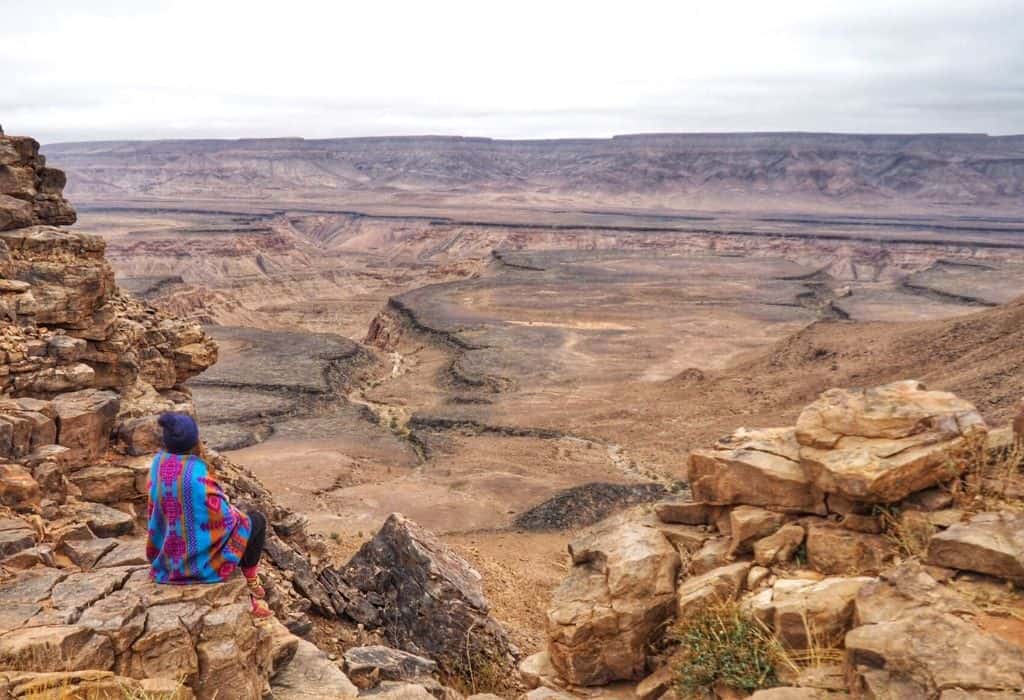
Fish River Canyon & Ai-Ais
One of the most impressive places in Namibia is the awe-inspiring Fish River Canyon, the largest canyon in Africa (disputed but generally accepted) and the second-largest canyon in the world, after the Grand Canyon.
If you just want to view the canyon, you can walk along the trail at the top from the start of the Fish River Hiking Trail to the main viewpoint.
You can easily do this in a couple of hours however it could be more with photo stops. The best time to visit is sunset and sunrise. I think I prefer sunset, which is best enjoyed with a sundowner drink (Amarula is my sundowner of choice).
If you have some time, you can take multi-day hikes into the canyon. A popular trail is the 5-day Hobas to Ai-Ais hike which is open from 1st May – 15th September, for groups of 3 or more. There are a limited number of people allowed to hike per day, so it is advised to book in advance and you may also be asked for a recent medical certificate.
The itinerary usually goes like this…
- Day 1: Descend into Fish River Canyon from Hobas
- Day 2 & 3: Hobas to Palm Springs
- Day 4: Palm Springs to the Causeway
- Day 5: The Causeway to Ai-Ais
Once you reach Ai-Ais, you will find the Ai-Ais Hot Springs. The hot water is rich with minerals that are known to be helpful to those with rheumatism and especially good to soothe those aching muscles. You can then arrange transport back from Ai-Ais.
This is a strenuous hike, sometimes in incredible heat and requires a lot of prep and a good level of fitness. If you do an unguided hike, you will need to bring all of your own equipment, however, you can arrange guided hikes through Fish River Lodge, where all equipment is provided.
For safety, I would generally always advise doing a guided hike.
Where To Stay:
- Fish River Lodge: If you want a room with an awesome view, I’d recommend Fish River Lodge.
- Hobas Lodge and Camp: They have rooms and camping facilities.
- Canyon Roadhouse: This is a Gondwana-owned property in the area. The Roadhouse has camping and lodge facilities and a cool restaurant (try the Amarula cheesecake). They also have the Village and Lodge which are around a 40-minute drive from the Roadhouse. The Village is priced similarly to the Roadhouse, whilst the Lodge is more luxurious and expensive.
- Ai-Ais Hot Springs Spa: If you’re doing the hiking trail, you’ll wild camp within the canyon, but it’s nice to treat yourself to a nice hotel (and spa) at the end. They also have camping facilities.
Things To Do:
- Enjoy the viewpoints at the top.
- Go on guided hikes/drives around the canyon rim.
- Hike the Hobas to Ai-Ais trail.
- Relax at the hot springs in Ai-Ais.
Time Needed:
- You need 1 – 6 days, depending on whether you are just taking a few photos at the top or walking the full trail. As it’s pretty far away from everything else, I’d recommend staying near there, at least for the night.
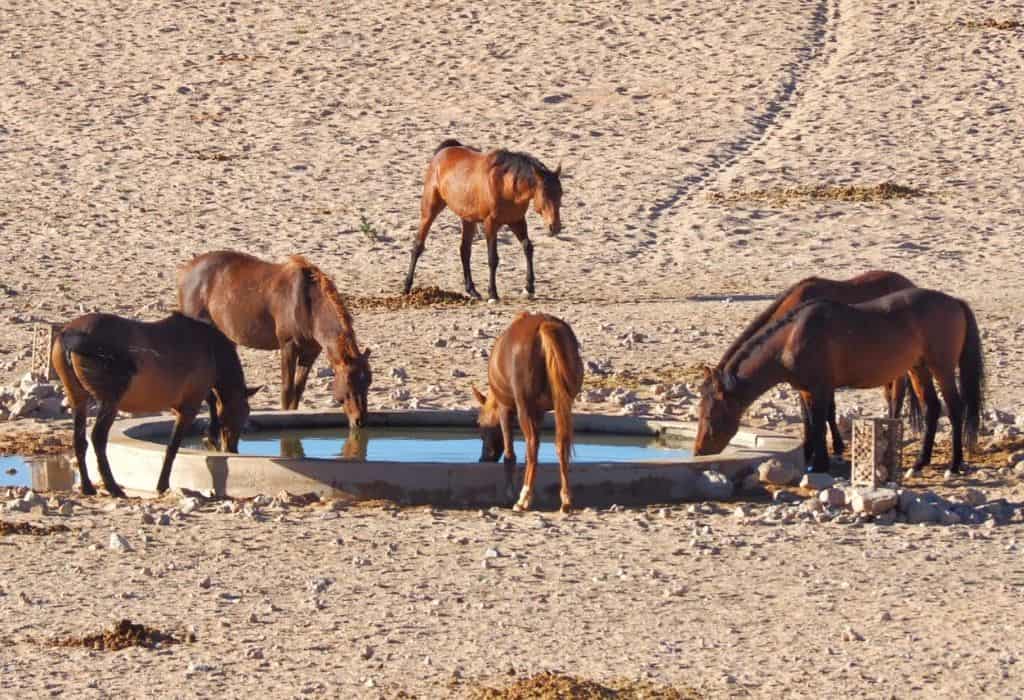
Aus, Luderitz & Kolmanskop
I’m putting Aus and Luderitz together as they are pretty close together. So you can stay at one and visit the other and visit all the things in between quite easily. Aus and Luderitz are also good places to base yourself if you want to visit the ghost town of Kolmanskop.
Aus
Aus is a great place for relaxing, stargazing and admiring the scenery – the mountains and sunsets are incredible.
We didn’t stay in the town itself, but at Klein Aus Vista, a beautiful farm surrounded by the Aus Mountains. Many people visit the area in June and July to see the pretty wild flowers that bloom in the area at that time. We just caught the tail end of them in August.
Another attraction here is the wild Namib Desert Horses that roam in this area known as the Garub. The best place to see them is at the Garub waterhole on the B4 between Aus and Luderitz. We stopped here and were really lucky to see quite a few horses drinking and rolling around in the sand, but they meandered off about twenty minutes after we arrived so some people who arrived later just missed them.
Whilst they are cool to see especially if you know the mystery surrounding how they came to be, don’t be super disappointed if you don’t see them, they do just look like regular horses.
Luderitz
Luderitz is a pretty, German colonial town on the Atlantic coast. There isn’t a lot there and so it is easily explored by foot. The main points of interest are Felsen Kirche, an Evangelical Lutheran Church, the colourful buildings on Kirch Street and the harbour. We also had a lovely stop for lunch at the Garden Cafe.
For those who like the water, you can take a boat trip out to Halifax Island where you can see jackass penguins and Cape fur seals and sometimes even dolphins and whales! The boat trips leave early in the morning, so there is usually time to make it for the second scheduled tour at Kolmanskop.
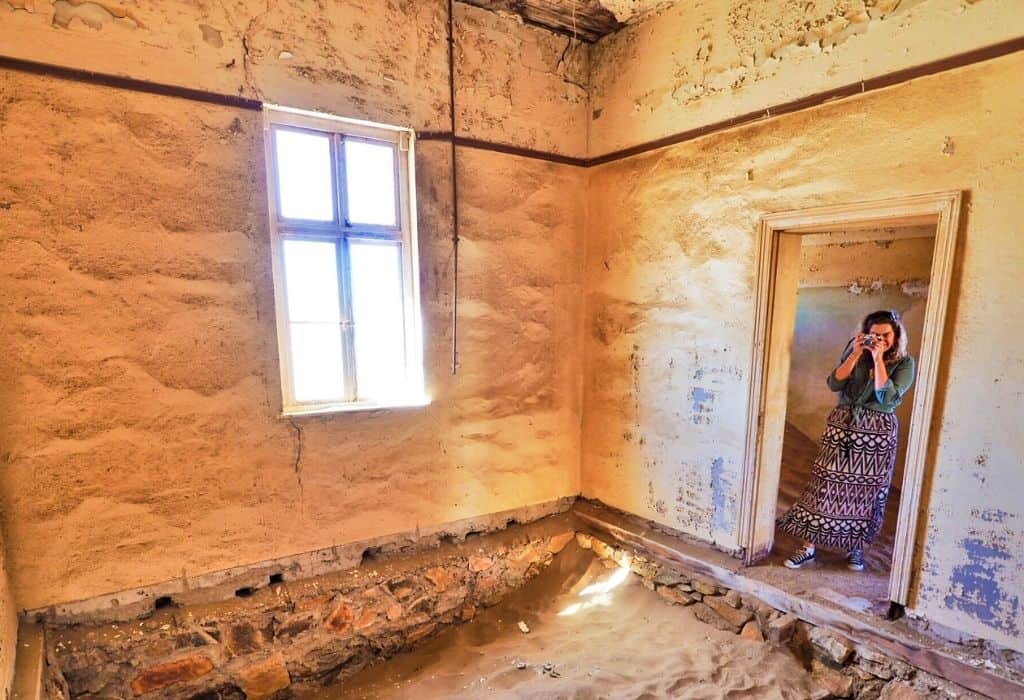
Kolmanskop
Kolmanskop lies in the Sperrgebiet (which means the Prohibited Area) between Aus and Luderitz. The once-lucrative diamond mining town was abandoned when bigger and better diamonds were found elsewhere and is now a ghost town.
There is an air of mystery to the place that was made famous by the many photographers who flock there to take pictures of the eerie, abandoned buildings that are slowly being reclaimed by the desert, but I’m going to be honest, I don’t love Kolmanskop.
The story behind it is quite cool, so you should go and if you like photography it’s very cool. However, I personally found it quite underwhelming as a place itself compared to the rest of Namibia. Go and see for yourself and let me know what you think in the comments below. If you’ve been already, what did you think?
I’d advise you to take a tour to get to understand the history of the town and then explore on your own for a while after. Scheduled tours leave at 9.30 am and 11.00 am (only one of Sundays and public holidays ay 10.00 am), they last between 45-60 minutes and are offered in both English and German.
The town is open between 8 am and 1 pm. You will usually be in a biggish group, so take the tour and then wander around by yourself afterwards to get better photos. If you are a photographer, you may want to arrange a permit to stay after hours.
Where To Stay:
- Klein Aus Vista: They have a lodge called the Desert Horse Inn (where we ate dinner) and a campsite (where we stayed).
- There are also a few good options in Luderitz too.
Things To Do:
- See the wild desert horses.
- Visit the ghost town of Kolmanskop.
- Take a boat ride out to Halifax Island.
- Take a multi-day horse safari through the desert (accomplished riders only).
- Visit pretty Luderitz.
- Take a scenic sunset drive at Klein Aus Vista.
Things To Know:
- Aus is the coldest place in Namibia, so if you are camping, especially in the winter months (June – September) you are going to need super warm clothing and sleeping bags.
- Even if you are not camping, take warm clothes (thermals and a down jacket). Believe me, it’s freezing! See the pic above! Have I mentioned that enough?
Time Needed:
- 1 – 2 days would be enough time to see most of what the area has to offer.
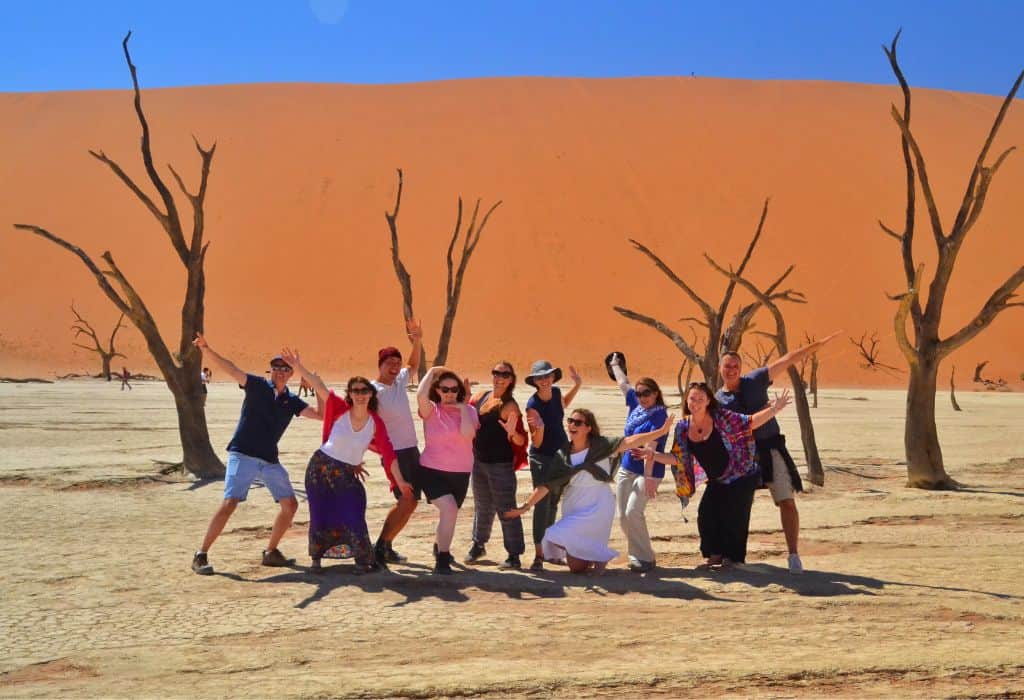
Namib-Naukluft National Park (Sossusvlei, Deadvlei & Sesriem)
The iconic image of Namibia is that of the gigantic, orange-coloured sand dunes of the Namib-Naukluft National Park and the area known as Sossusvlei, which incorporates Dune 45, Big Daddy and Deadvlei. This is an absolute must-do when in Namibia!
On the day we arrived, we headed to Elim Dune (near Sesriem Campsite) to watch the sunset over the surrounding mountains and dunes with a cup of wine (from a box – classy)!
Dune 45
The next morning we were up early to climb Dune 45 in Sossusvlei in time to watch the sunrise over the park. The hike up isn’t super difficult, but you do need to have a moderate level of fitness and a bit of determination (I saw a few people turning back) as climbing on sand is not the best. It’s all worth it though!
Wear good shoes (or hiking sandals with thick socks) if you are climbing the dunes as early in the morning the sand is often freezing and in the middle of the day/afternoon, it can get really hot.
If you want to climb Dune 45 for sunrise, you need to stay inside the park (there are only 2 places to stay inside the park – see below), however I wouldn’t say it’s essential to climb Dune 45 at sunrise, you can still get great views at other times on the day.
Deadvlei
From Dune 45 we headed further into the park towards Deadvlei, a salt pan filled with 900-year-old dead camel thorn trees and Big Daddy, the tallest sand dune in Sossusvlei (but not the tallest in Namibia, that accolade goes to Dune 7).
To get to Deadvlei, you can take the shuttle in (for a small fee) or drive-in (if you have a 4×4 – although if you’re not used to driving on thick sand, I’d advise taking the shuttle) and then you can walk in over relatively flat dunes (takes around 20 minutes).
Or you can get the shuttle to drop you halfway and hike up Big Daddy and then down into Deadvlei.
Deadvlei is an awesome place to take photographs and we must have spent an hour or two playing amongst the trees.
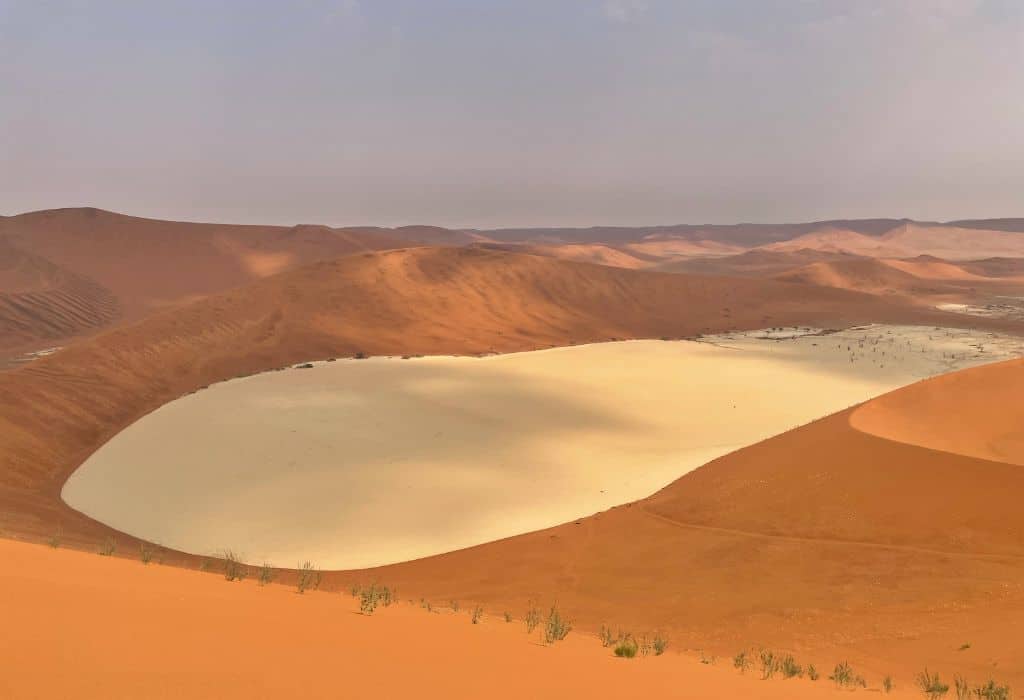
Big Daddy
Hiking Big Daddy is one of the best things I’ve done in Namibia, so I would highly recommend that you do it. Whilst it’s higher and takes longer than Dune 45 (between 45 minutes and 1 hour and 30 minutes depending on how fast you can go), it’s a bit easier overall as it’s more up and down rather than straight up.
The views from the top are absolutely incredible and it’s so much fun walking down the steep dunes into Deadvlei!
Sesriem Canyon
Another great place to visit in the area is Sesriem Canyon. It’s absolutely beautiful and great for photography, so make sure you add it to your Namibia itinerary. Give yourself at least an hour and a half to walk around if you can.
Where To Stay:
- Sesriem Campsite: This is the only campsite within the park, run by NWR. They have a bar/restaurant, shop and pool.
- Sossus Oasis Campsite: This is a great campsite for self-drivers.
- Sossusvlei Lodge: This is a really nice mid-range lodge, just outside the park (5 minutes drive from Sesriem Campsite). We went here for dinner and the buffet was incredible!
- Desert Quiver Camp: This is a great mid-range self-catering lodge with a pool.
- Sossus Dune Lodge: This is the other place to stay inside the park. It’s more mid-range/luxury at around $155 – $310 per person, per night, depending on the season.
- Little Kalula: A luxurious camp in Sesriem.They have 11 climate-controlled suites, each with their own plunge pool.
- &Beyond Sossusvlei Mountain Lodge: A chic, luxury lodge which has an amazingly powerful telescope and an onsite astronomer.
- You can find many other options here.
Things To Do:
- Climb Dune 45.
- Climb Big Daddy.
- Photograph Deadvlei
- Go hot air ballooning.
- Take a scenic flight over the area.
- Hike through Sesriem Canyon.
- Do some stargazing.
Time Needed:
- 2 days is enough to see most of Sossusvlei, but you could add an extra day if you want to have a more relaxed stay.
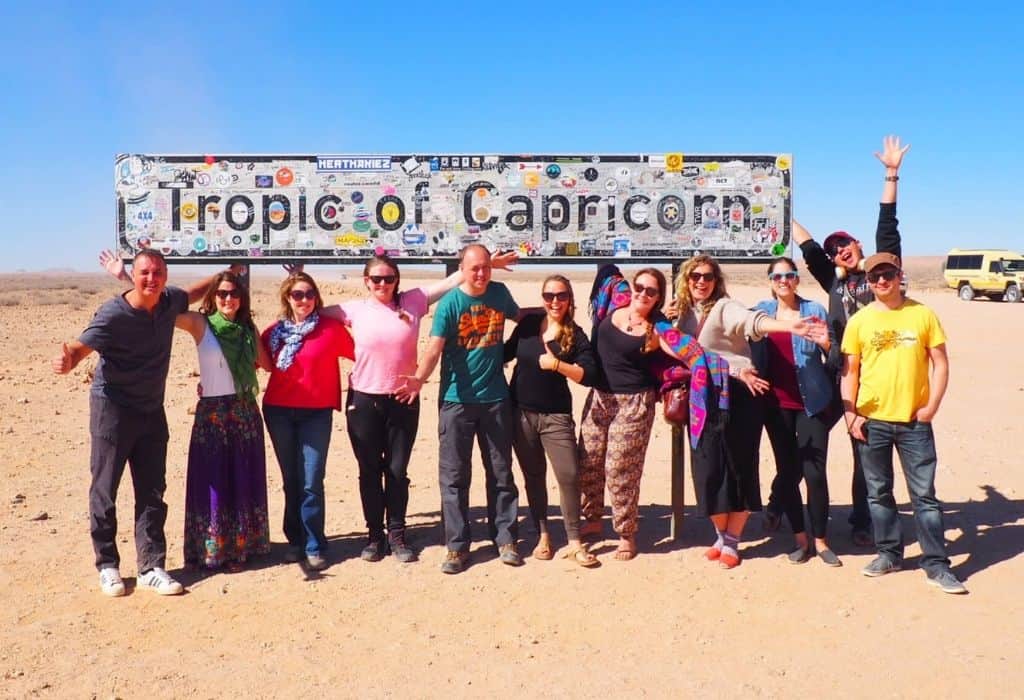
Solitaire & the Tropic of Capricorn
Between the dunes of Sossusvlei and the town of Swakopmund, there are two places that a lot of people like to stop at. The first is the Tropic of Capricorn sign for a quick photo.
Heading on a bit further is the small outpost of Solitaire, which isn’t much more than a guesthouse/camping ground, gas station and shop, but they have a great bakery called Moose McGregor’s Desert Bakery, which is said to have the best apple pie in all of Namibia…
Not having tried every piece of pie in Namibia I cannot confirm or deny this rumour. But I’ve eaten the apple pie a couple of times and it is delicious.
Where To Stay:
- Solitaire: If you’re going to stay in the area, I’d definitely recommend staying in Solitaire itself. You can camp or stay at the lodge. They also have the Solitaire Desert Farm around a 10-minute drive away.
- There are a few other options nearby.
Things To Do:
- Eat apple pie.
- See the cute ground squirrels that roam the grounds.
- Hiking.
- Cycling.
- Hot air ballooning.
- Spreetshoogte Pass.
- Kuiseb Canyon.
Time Needed:
- 1 hour if just stopping by on your way between Sossusvlei and Swakopmund, or maybe 1 or 2 days if you want to take part in activities in the area.
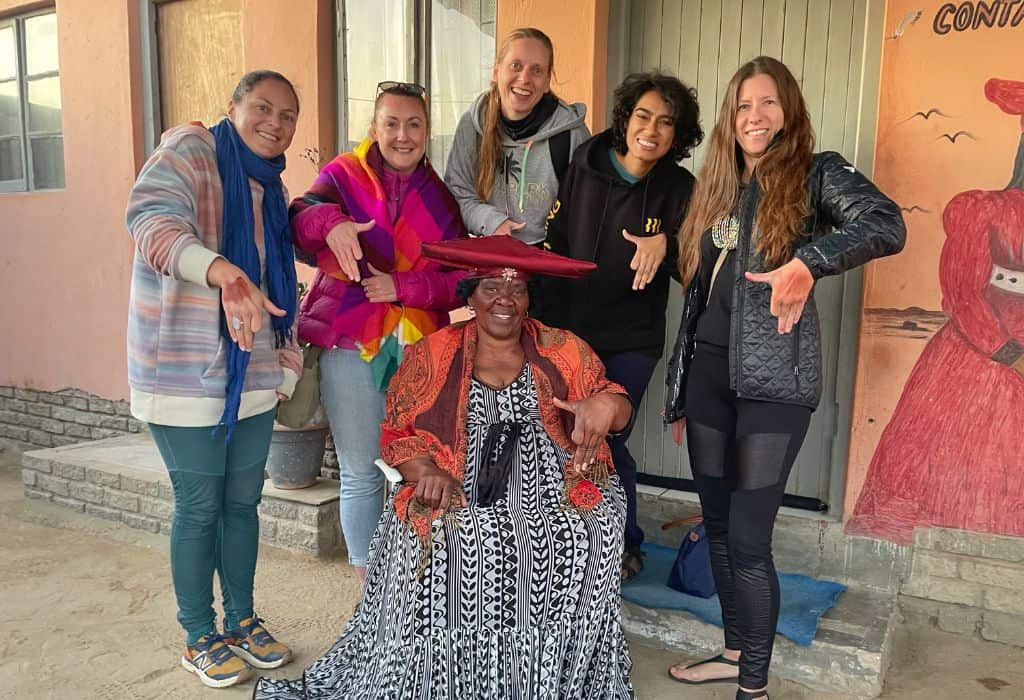
Swakopmund
Swakopmund (or Swakop as it’s often called) is the adventure capital of Namibia because there are so many cool things to do there. The town is flanked by the sand dunes of the Namib Desert on one side and the Atlantic Ocean on the other, creating an unusual and interesting feel to the town.
Activities include quad biking through the dunes, boat tours, desert tours, sandboarding, walking tours of the city and a visit to the Mondesa township. Swakopmund is also one of the BEST places on the planet to go skydiving due to its incredible landscape.
My favourite thing to do whilst in Swakop is to take a trip out to Walvis Bay and Sandwich Harbour. I’ve done it twice now and it’s incredible, zipping up and down the sand dunes in our 4-wheel drive cars, seeing the birds and wildlife, seeing the pink salt lakes, and stopping to take photographs overlooking the point where these epic sand dunes meet the ocean.
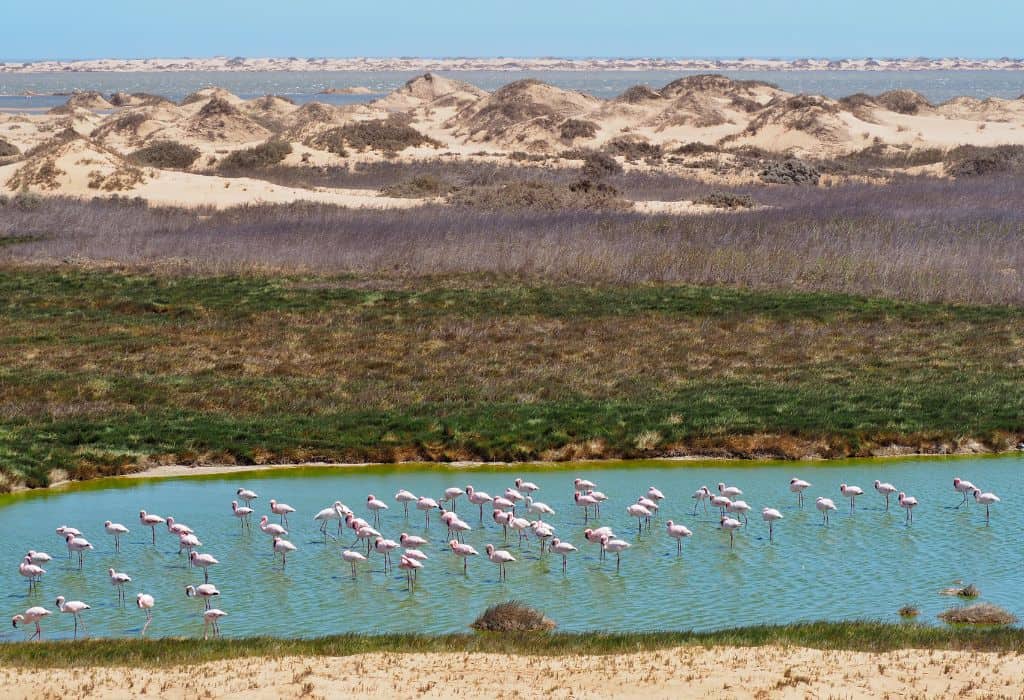
They top it off with a champagne lunch on the dunes too. All in all, an incredible day! There are a number of different tours available from half-day to full-day, with some including boat trips or kayaking – the choice is yours! The best time to visit Sandwich Harbour is at low tide.
Swakop is also a great place for shopping and there are some great restaurants too including The Tug and Kucki’s Pub.
READ MORE: Amazing Things to Do in Swakopmund, Namibia
Where To Stay:
- Tiger Reef Campsite: If you are self-driving and need a campsite, stay here. They have a great bar and restaurant with amazing views over the Atlantic.
- Salty Jackal Backpackers & Surf Camp: This is a great place for solo travellers and those wanting to surf. You can book surf lessons with them, even if you aren’t staying there.
- Mole Guesthouse: This is a lovely guesthouse in a good location, close to the town centre and the beach.
- Driftwood Guesthouse: Stylish guesthouse, about a 30-minute walk outside of the main part of town.
- Desert Sands Boutique Hotel: Great location in the centre of town, with b&b and self-catering options.
- Desert Breeze Lodge: Slightly out of town, with great views across the dunes. This is a great place if you want some peace and quiet.
- The Delight: A mid-range hotel owned by the Gondwana group.
Things To Do:
- Skydiving.
- Take a trip to Walvis Bay & Sandwich Harbour.
- Quad biking through the dunes.
- Whale and dolphin watching boat tours.
- Living desert tours.
- Sandboarding.
- Surfing.
- City tours.
- Mondesa township tours (I recommend going with Hafeni).
- Dinner at Hafeni restaurant.
- Scenic flights.
- Visit Peter’s Antiques.
Time Needed:
- I’d say that you need at least 3 days in Swakop to do some activities.
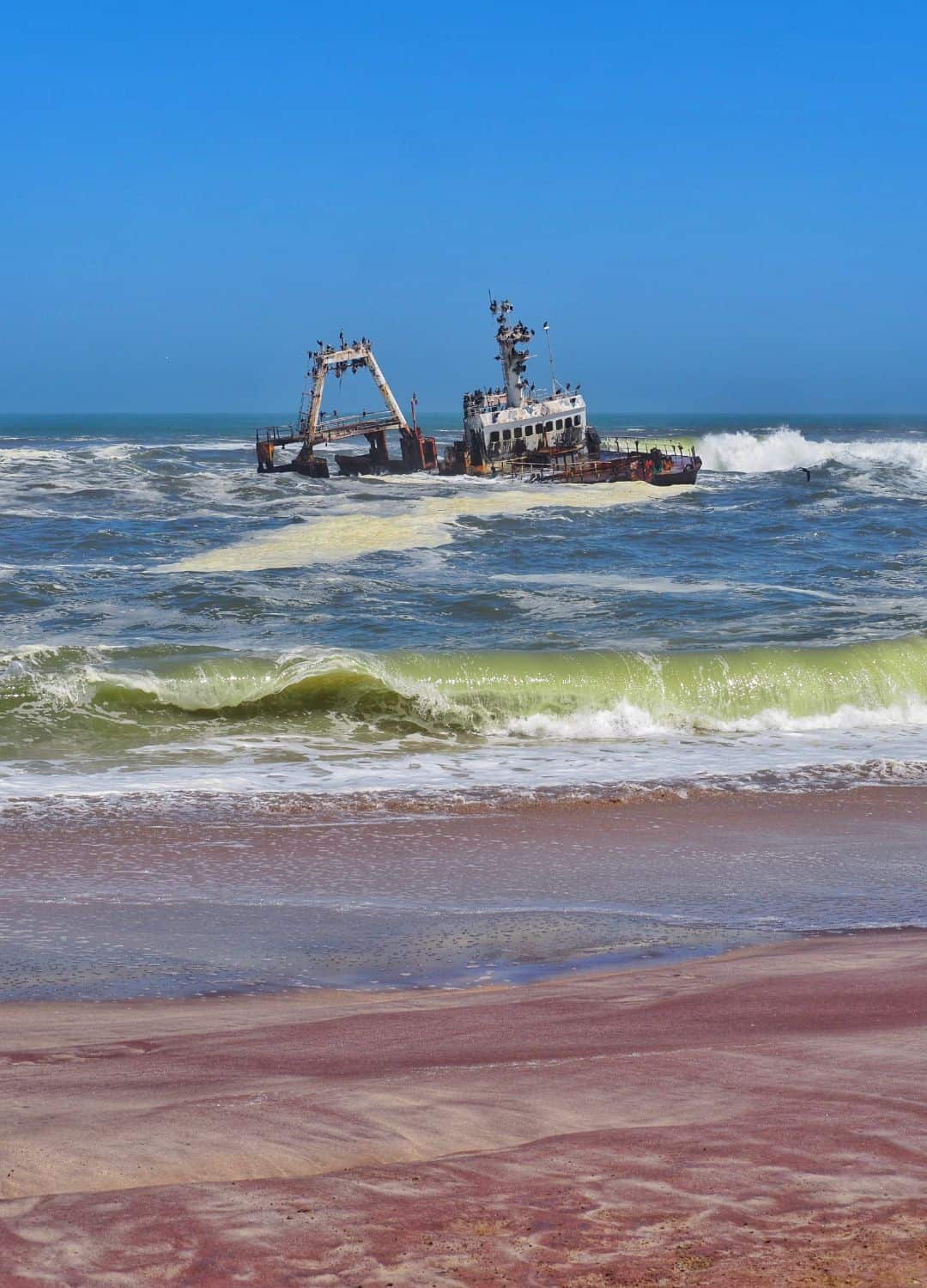
Skeleton Coast
North of Swakopmund, you’ll find the region of Namibia called the Skeleton Coast.
The Portuguese sailors called it “The Gates of Hell” and the San Bushmen referred to it as “The Land God Made in Anger’ due to the often bleak and inhospitable conditions.
When the cold water currents of the Atlantic Ocean meet the hot dry air of the Namib Desert, it causes thick fog which led many ships to run aground leaving behind a shipwreck graveyard, along with the bones of whales and other animals – giving it the name ‘The Skeleton Coast’.
Heading north from Swakopmund you’ll find the Zeila shipwreck which makes a cool stop on your Namibia road trip.
A bit further along the coast, past Henties Bay (a nice place to stop for lunch), is the Cape Cross Seal Colony, where up to 100,000 cape fur seals congregate to lunge, mate and frolic in the waves. The seals are amazing!
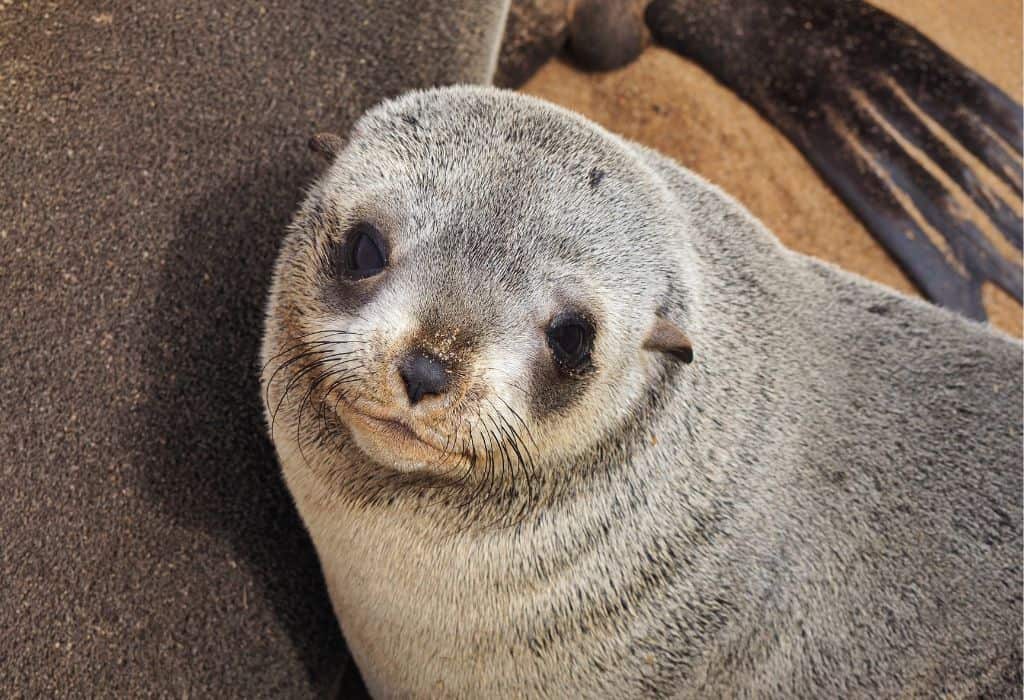
For one they are fascinating to watch, but the best thing about visiting is the sounds they make. They are hilarious, but they do stink, so if you are sensitive to smells, wear a face mask with some essential oils inside!
After Henties Bay, I would probably head inwards to Damaraland (see below) but if you want to get really off the beaten path, you could also continue up the Skeleton Coast Wilderness Area if you have the time – you just might just need to rejig the itinerary and do a bit of zig-zagging if you want to see everything.
Some of the shipwrecks of the Skeleton Coast can be seen independently with a 4×4 and some require a tour. Access to the far northern part of the coast (where most of the visible wrecks are) is restricted to 800 people per year and you need to take a fly-in tour.
In the north, you can also take a trip to hear the ‘roaring dunes’, so-called because of the rumbling noise produced from the air caught between the grains of sand, which sounds like a low-flying plane, spooky.
Where To Stay:
- If you are just visiting the Cape Cross Seal Colony and the Zelia on your way through to Damaraland, you probably don’t need to stay on the Skeleton Coast, however, if you head further north up the coast, there are a few options.
- Going from south to north… Torra Bay, Terrace Bay, Hoanib Skeleton Coast Camp, the Skeleton Coast Shipwreck Lodge which looks like it was modelled after whale bones (it’s very cool… and very expensive), and then in the far north, right up near the Angolan border, the Okahirongo Lodge looks great!
Things To Do:
- Visit the Cape Cross Seal Colony.
- Hear the roaring sand dunes.
- Go on a scenic flight over the coast.
- See the shipwrecks.
- Stop for lunch at Henties Bay.
Time Needed:
- 1 – 4 days. One day, or a few hours, is fine if you just want to go as far as Cape Cross, but if you want to see much more, you’ll need the extra days.
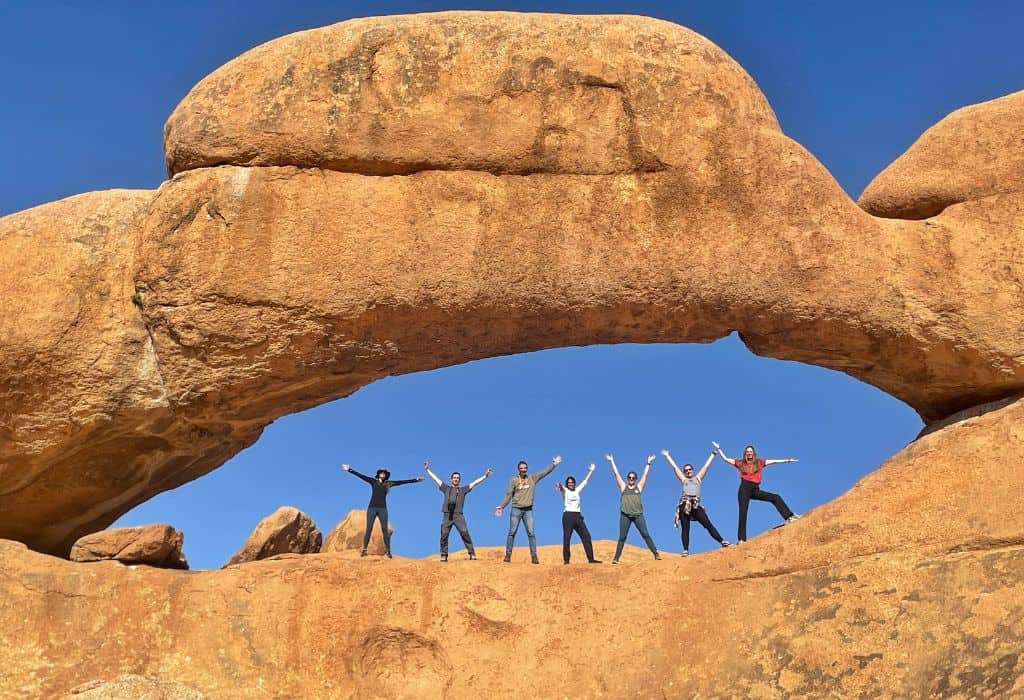
Damaraland & Spitzkoppe
Next on your Namibia itinerary, head to the Damaraland region of Namibia.
Damaraland is known as being one of the most beautiful places in the country (although it’s all pretty spectacular) and the southern part of Damaraland is where you’ll find Spitzkoppe, a series of incredible rock formations‚ often called ‘the Matterhorn of Africa’ due to their shape.
Spitzkoppe has long been a popular stop on the overland trail, yet still manages to retain a sense of remoteness and is a great place for hiking and sleeping under the stars.
As you head north, you’ll come across, the Brandberg, known as the ‘Fire Mountain’, the tallest mountain in Namibia which attracts climbers from all over the world.
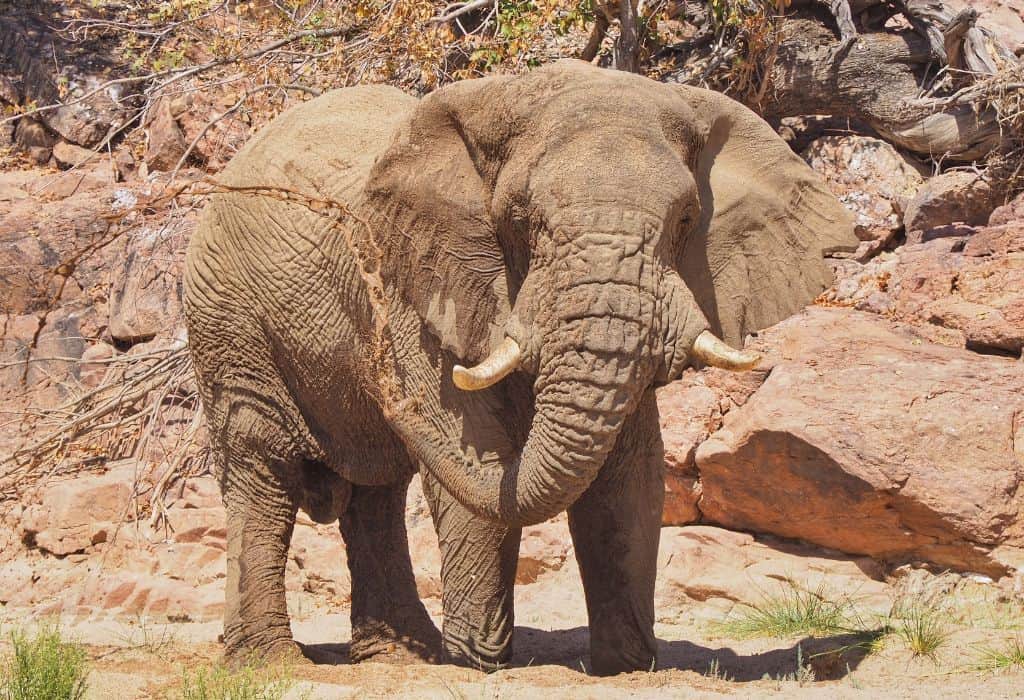
Further north still you can visit the desert elephants that roam the area and see the ancient rock paintings of Twyfelfontain (a UNESCO World Heritage Site) that are thought to date back around 6000 years. There are also rock paintings in Spitzkoppe, however, the best ones are at Twyfelfontain.
Stop off at the old mining town of Uis and have lunch at Cactus & Coffee on the way between Spitzkoppe and Madisa Camp.
Where To Stay:
- Spitzkoppe Community Campsites: These are the basic campsites where you can pitch your own tent and be right in the ‘action’ close to the famous rock arch.
- Spitzkoppe Mountain Camp: This is just outside the park, but with beautiful views of the rock formations and mountains. They have camping spots and tented accommodation. They have a small plunge pool and bar.
- Spitzkoppen Lodge: An upmarket lodge, with great views, a pool and a bar.
- Madisa Camp: This is a beautiful camp near Twyfelfontein and the Damara Living Museum. They have both static tents and room to pitch your own.
Things To Do:
- Hike around Spitzkoppe (see rock paintings, rock hyrax and rock formations).
- See the ancient rock engravings at Twyfelfontain.
- Visit the Damara Living Museum.
- Go desert elephant tracking.
- Volunteer with EHRA.
Time Needed:
- I’d suggest 1 night at Spitzkoppe and 2 nights at Madisa Camp.
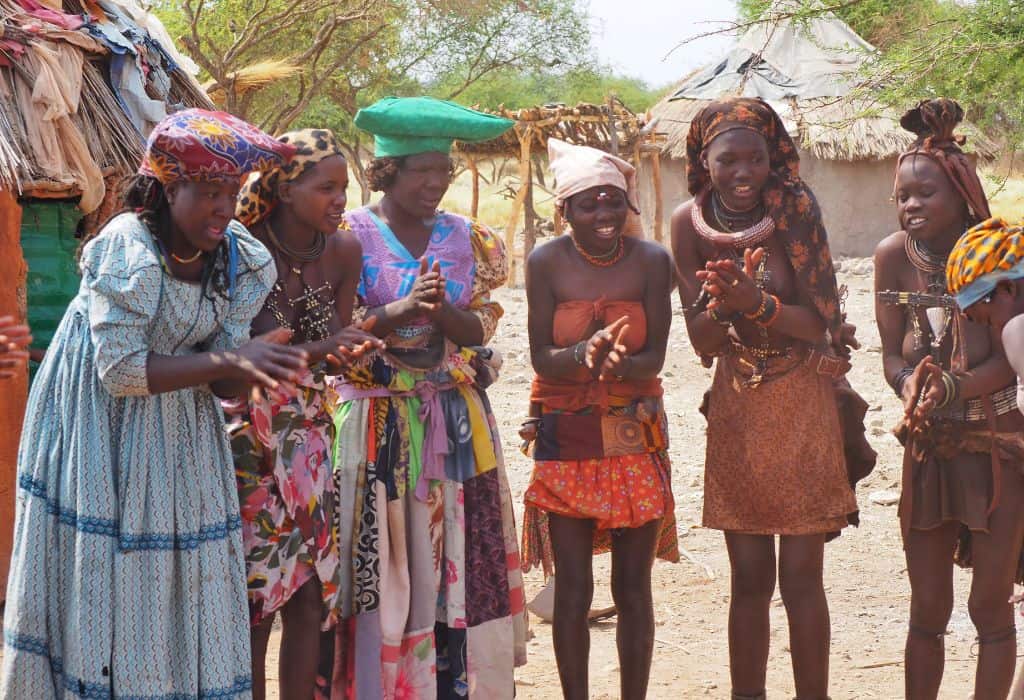
Opuwo & the Kunene Region
In the northern part of the country, you will find Opuwo, the capital of the Kunene Region (formerly known as Kaokoland), it’s a little bit out of the way, but if you can squeeze it into your Namibia itinerary, it’s worth it.
Kaokoland is the traditional home of the Herero and Himba people and whilst you are here, you can organise visits to meet them (the Himba especially) and learn about their fascinating culture. The Himba and the Herero are the same tribes and often live together in the same villages, but they dress differently due to the influence of colonial Germany.
You will also see plenty of Herero and Himba women in traditional clothing walking around town just going about their business. Just don’t be that person who takes pictures without consent.
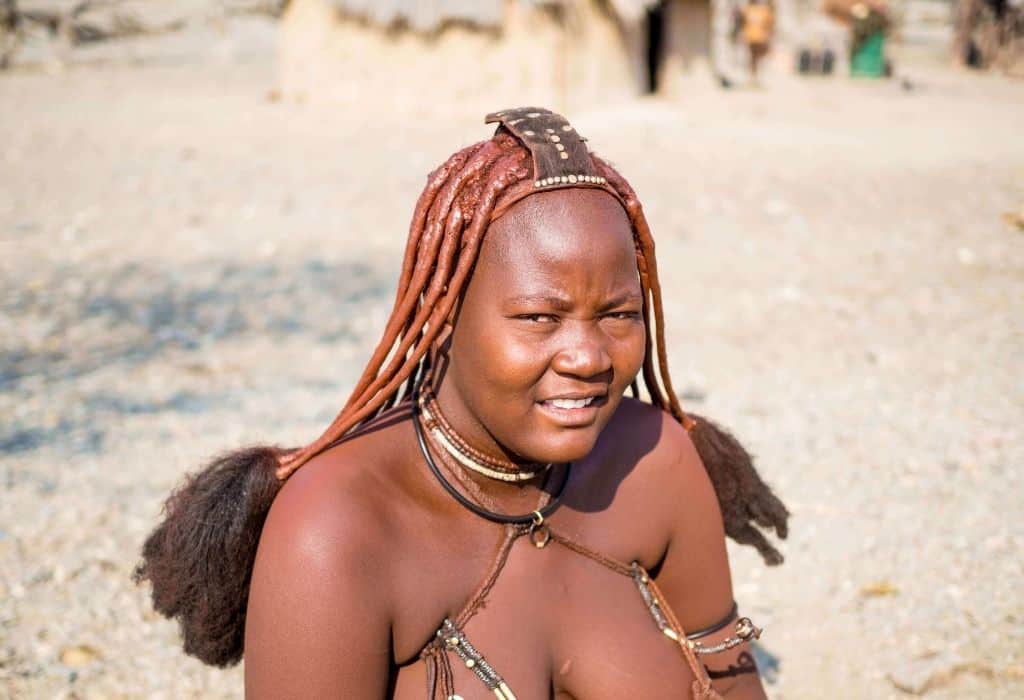
I need to warn you that you may be a bit disappointed with the organised Himba tribe visits in Opuwo (or anywhere else in Namibia) as they can feel a bit set up. However, in Opuwo, the villages you visit are real Himba (or Herero) villages that are inviting tourists to visit and are open to photography.
There are plenty of Himba villages in the mountains surrounding Opuwo and further north (towards Angola) that aren’t tourist villages, however, there is a debate about whether it’s fair to show up unexpectedly and force yourself upon people who are not exposed to the Western world and who have not chosen to earn an income with tourism.
In other parts of the country, there are ‘set up’ Himba villages, where real Himba live, but the villages are there just for tourism purposes and the land is not owned by the Himba themselves. You’ll find these in Damaraland, near Swakopmund and Etosha National Park.
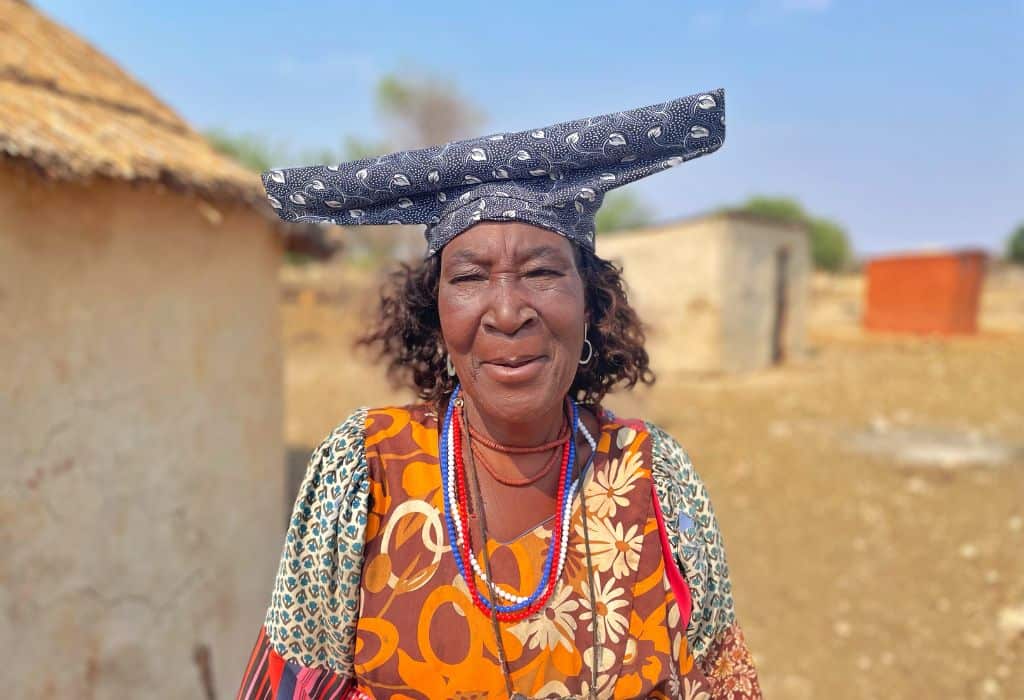
The best way to meet and interact with the Himba authentically is to spend a longer period of time in and around Opuwo, to meet people naturally or if you are introduced by mutual friends – however, this is very hard to do if you are there for only a couple of days.
Whilst in Opuwo, you can also take a trip up to Epupa Falls, near the Angolan border, a beautiful waterfall in an otherwise dry, but stunning region. This can be done as a day trip, or you can stay there too.
The falls are best visited just after the rainy season when the roads are less difficult to navigate and the water level is still high, around April/May. The water levels drop dramatically later in the year and similar to Victoria Falls, they are almost dried up by September/October.
Read More: How to Visit the Tribes of Namibia & A Visit to the Himba Tribe – What I Wish I’d Known
Where To Stay:
- Opuwo Country Lodge: This is one of the best places to stay Opuwo town, with rooms and camping facilities, as well as a pool and a spa.
- Ohakane Lodge: A budget lodge in town with a restaurant and pool.
- Kaoko Mopane Lodge & Campsite: Located in Opuwo, they have rooms, camping spots, an outdoor swimming pool, a bar and a garden.
- Omarunga Epupa Falls Camp: Mid-range lodge in a great location on the banks of the Kunene River.
- Epupa Camp: A camp with static tents and space for camping. They have a pool overlooking the river.
- Epupa Falls Lodge & Campsite: They have chalets and camping space. Very close to the falls.
Things To Do:
- Visit the Himba people.
- Activities at Epupa Falls include visiting the falls, going white water rafting (May to November), hiking, Himba visits, Himba traditional market, sundowner drives, fishing and birding.
Time Needed:
- For Opuwo itself, you only really need a day, but as it’s quite far from anywhere else, 2 nights is best.
- But if you plan to go up to Epupa Falls, whether that be a day trip or to stay up there, consider adding more time.
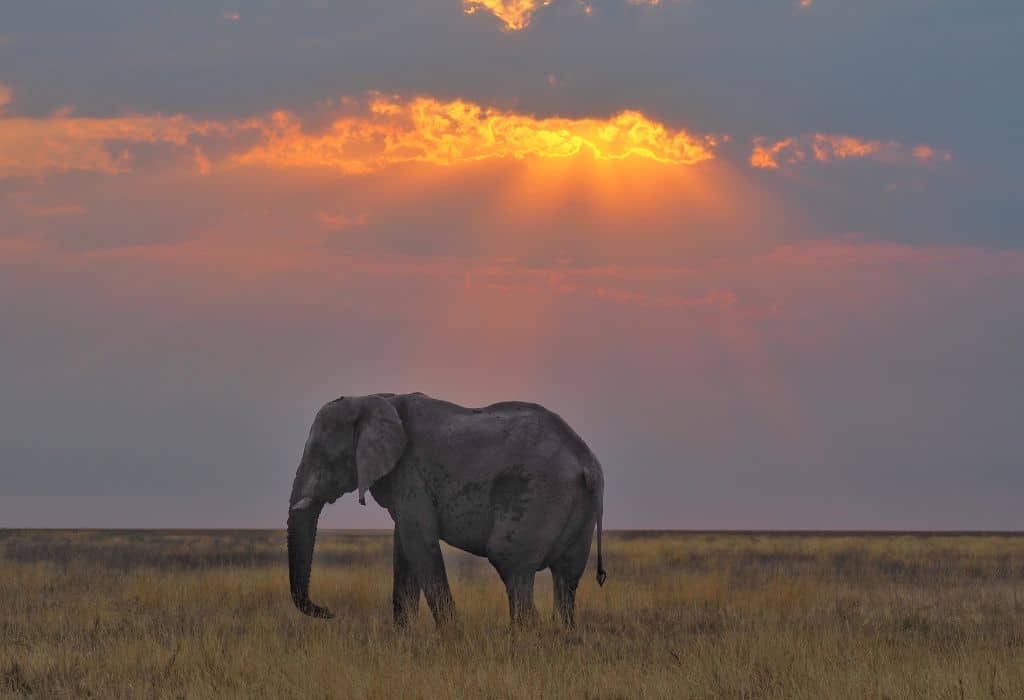
Etosha National Park
Etosha National is one of the top safari destinations in Africa and a must for your Namibia itinerary. The park is visually very different from all of the other parks I’ve been to and the name ‘Etosha’ actually means ‘great white place’.
There is a wide variety of animals to see including lions, leopards, elephants, giraffes, oryx and zebras so you will love going on safari here!
We usually spend the first night at Namutoni Camp, stop off at Halali Camp for lunch (bring your swimsuits and use the pool) and then stay the second night at Okaukuejo Camp.
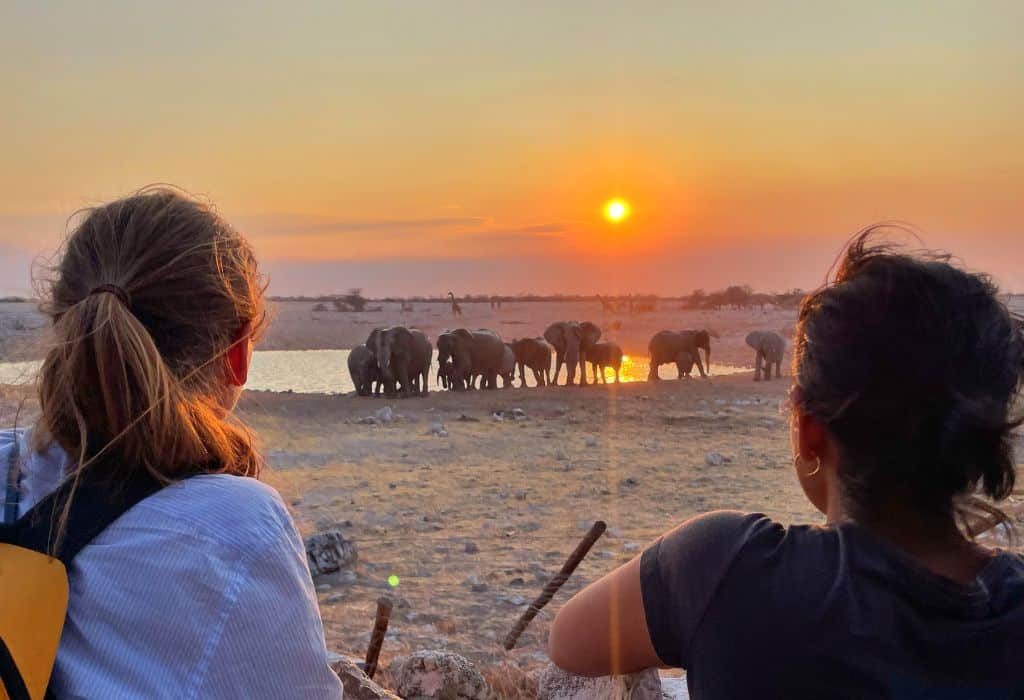
My absolute favourite moment in Etosha was sitting at the waterhole at Okaukuejo Camp and watching around 30 elephants wander in to drink and bathe. Not long after they were joined by a few giraffes and zebras and even a few rhinos. I have never seen anything like it in my life. Simply magical.
Where To Stay:
- Namutoni Resort: This is the NWR camp and lodge in the north of the park. This is a good place to see big cats and a good place to stop if entering the park from the north. They have a floodlit waterhole where animals come to drink.
- Halali Resort: This is the NWR camp and lodge in the middle of the park. Even if you don’t stay here, you can always go for lunch and a swim.
- Okaukuejo Resort: This is an NWR camp and lodge with one of the best waterholes in the park (so it’s always busy) where you can watch elephants, rhinos, giraffes and zebras drinking and bathing together. I highly recommend staying here. For a special treat, stay in one of the rooms overlooking the waterhole.
- Etosha Village: A mid-range/luxury lodge just outside the park.
- There are plenty of other options here.
Things To Do:
- Go on safari.
- Hang out at the waterholes, especially at Okaukuejo at sunset.
Time Needed:
- 2 – 3 days is usually enough for Etosha, but if you want to relax a bit, you could extend your stay for longer.
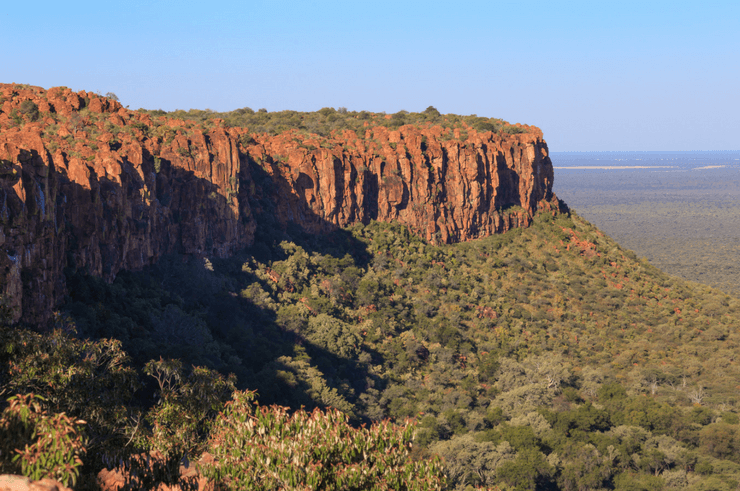
The Waterberg Plateau
If you have time and wanted to make a slight detour on your way back to Windhoek, I would add the Waterberg Plateau to your Namibia itinerary – it’s a beautiful spot to give your legs a stretch after your safari.
The plateau is an unusual site, rising 200m above the ground with fantastic views over the area and stunning flora and fauna.
There’s lots to do, including a couple of multi-day hikes (seasonal April – November) that you can take part in. The first is the guided Waterberg Wilderness Trail (4 days, starting on the 2nd, 3rd and 4th Thursday of the month) and the second is the Unguided Hiking Trail (4 days starting on the 2nd, 3rd and 4th Wednesday of the month).
On the multi-day hikes, you stay in huts on the trail, bring your own equipment and you will need permits, which need to be booked way in advance via Namibia Wildlife Resorts. Numbers are strictly limited and only 1 group per week are allowed on each trail.
There are also some shorter day hikes, cultural tours and game drives that you can take part in, organised through the lodges and camps in the area.
Where To Stay:
- Waterberg Wilderness: They have a number of different options, including lodges and a couple of campsites.
- Waterberg Camp: This is run by the Namibia Wildlife Resorts (NWR). They have rooms and camping available.
Things To Do:
- Hiking.
- Game drives.
- Visit the Herero people who live in the area.
- Go rhino tracking on foot.
Time Needed:
- 2 – 5 days depending on the hikes you do.
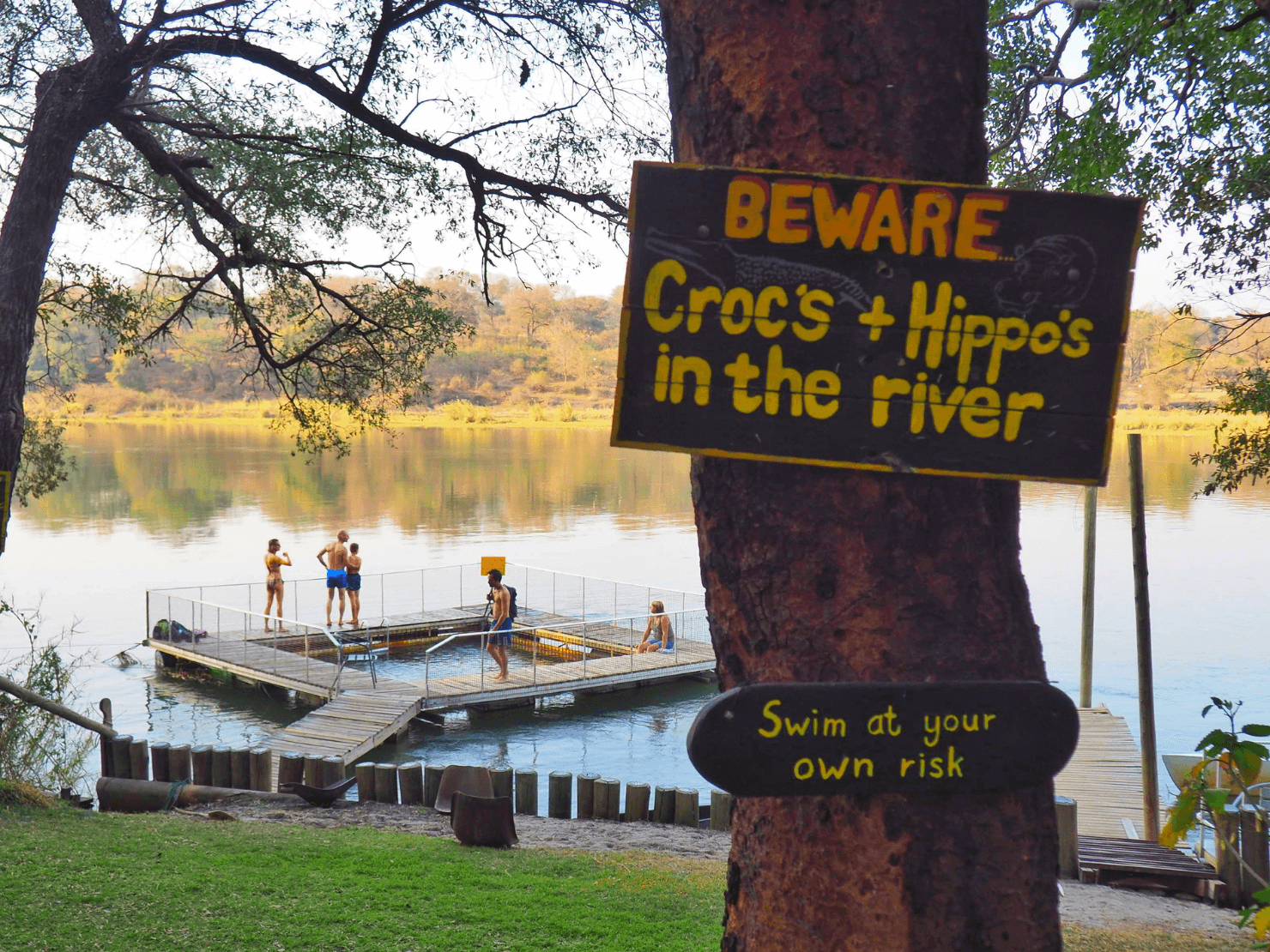
The Caprivi Strip
Ok, so the Caprivi Strip is pretty much completely out of the way unless you are driving in from or to Zambia, Zimbabwe or the northern part of Botswana or out that way, however, I wanted to add it in as an option for your Namibia itinerary as I know quite a few people do longer trips, driving north to south or vice versa and it is a cool place to visit.
The Caprivi Strip is an up-and-coming wildlife destination with a few different areas to explore including Bwabwata National Park, Mahango Game Reserve, Popa Falls National Park, Mudumu National Park and Nkasa Rupara National Park.
You could easily spend a good few days on the Caprivi Strip alone, stopping off at a number of different camps and lodges along the way.
In the far east of the Caprivi Strip, there’s also Impalilia Island where Namibia, Zambia, Zimbabwe and Botswana meet and here you’ll find a few lodges and tons of wildlife viewing opportunities along the Zambezi and Chobe Rivers that lie on either side of the island.
As far as I know, there are no camping sites on Impalilia Island, but there are plenty across the border in Botswana. Pre-booking is essential.
Where To Stay:
- Ngepi Camp: A quirky and wonderful eco-lodge and campsite with tree houses and camping spots. They also have a swimming pool in the river (fenced off so the crocs and hippos can’t get you).
- Chobe Savanna Lodge: A luxury lodge on Impalilia Island.
- Inchingo Chobe River Lodge: A beautiful tented camp on Impalilia Island.
Things To Do:
- Safari.
- Boat cruises.
- Village walks.
- Fishing.
Time Needed:
- I would suggest around 2 – 6 days, depending on whether you are just passing through or taking your time and seeing different parks.
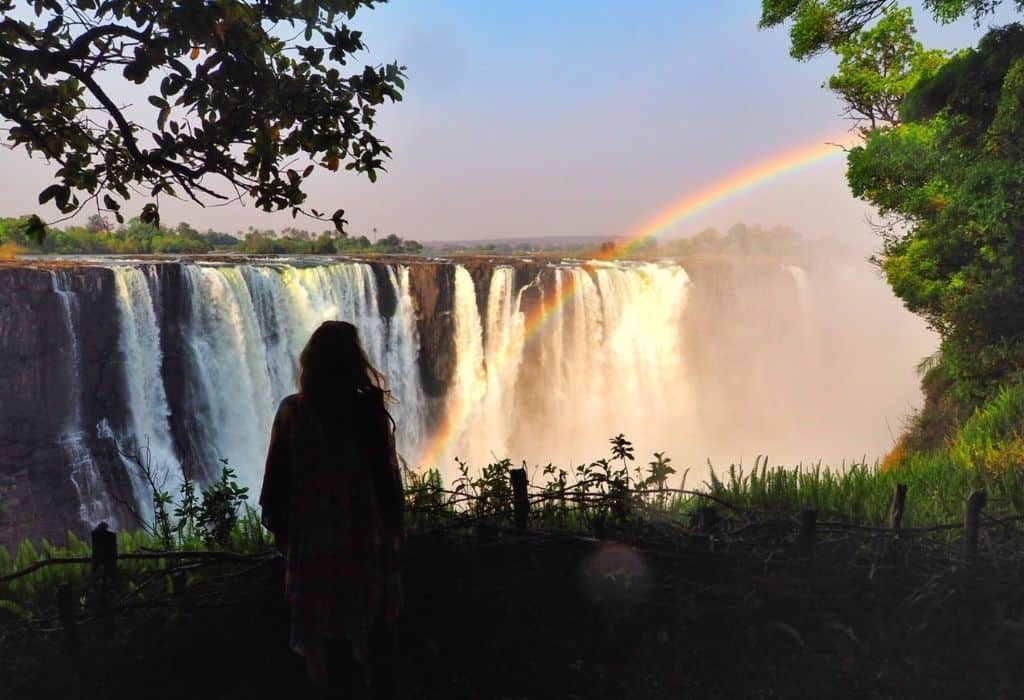
Alternative Routes
If you’re not doing your Namibia itinerary in a loop starting and ending in Windhoek, you could follow one of the alternative routes below.
If coming from Livingstone (Zambia)/Victoria Falls (Zimbabwe)/Kasane (Botswana) going to South Africa (or vice versa):
Livingstone/Vic Falls/Kasane – Caprivi Strip – Etosha – Opuwo – Damaraland – Spitzkoppe – Skeleton Coast – Swakopmund – Windhoek (although you could miss this out as it’s a bit of a detour) – Namib Naukluft National Park – Aus/Luderitz – Quiver Tree Forest – Fish River Canyon – Orange River, South Africa
If coming from D’kar (Botswana) to South Africa (or vice versa):
D’kar – Windhoek – Etosha – Opuwo – Damaraland – Spitzkoppe – Skeleton Coast – Swakopmund – Namib Naukluft National Park – Aus/Luderitz – Quiver Tree Forest – Fish River Canyon – Orange River, South Africa
There are so many wonderful options! So enjoy your epic adventure through Namibia!
I hope this gives you some great ideas for your own Namibia itinerary! If you’ve already been, do you have any other great places to add to the list?
Pin This Post For Later

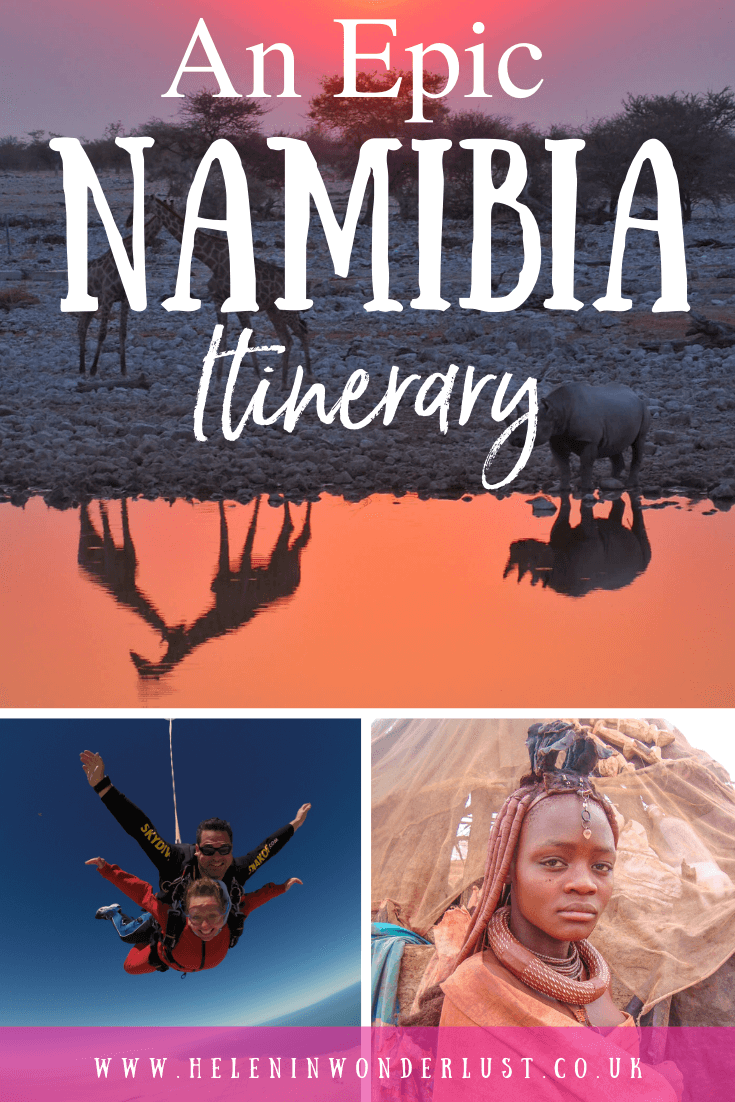

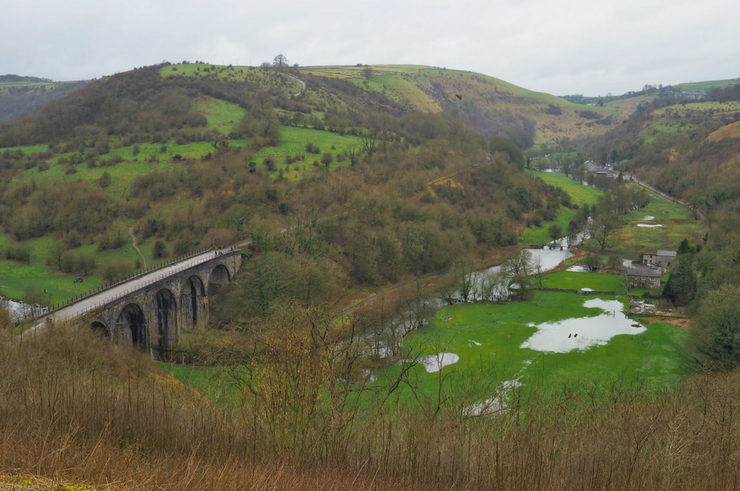
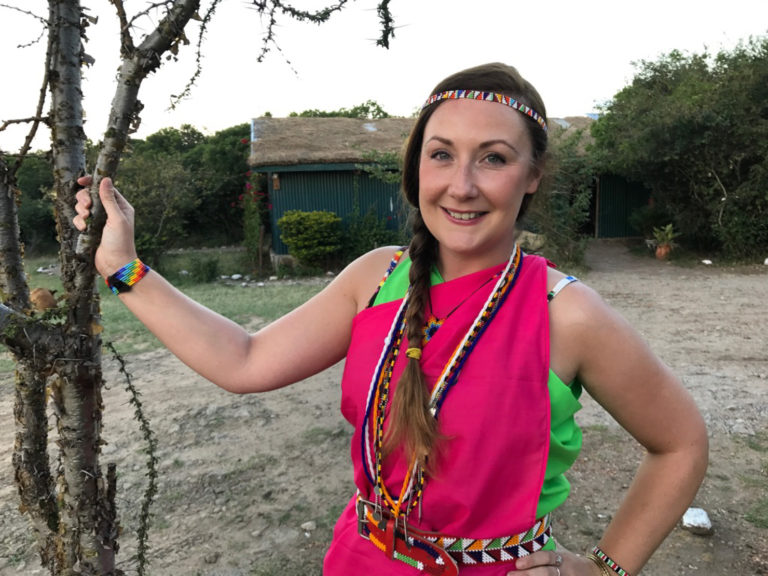
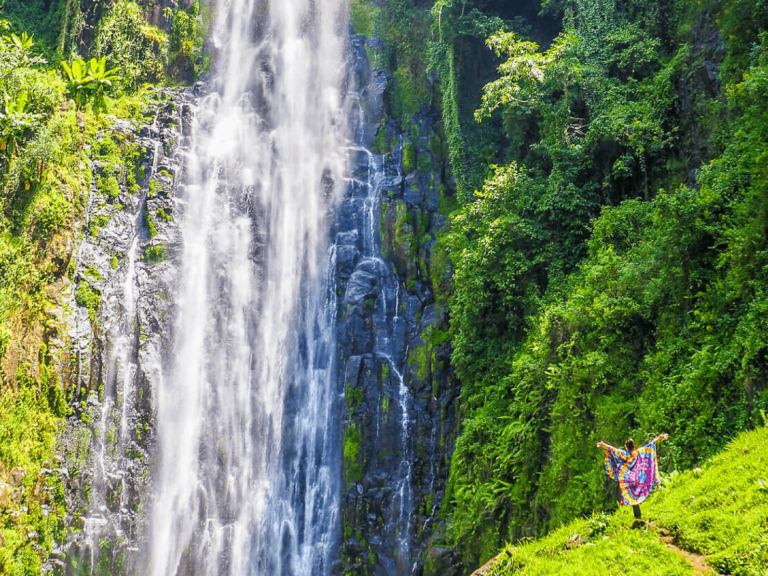
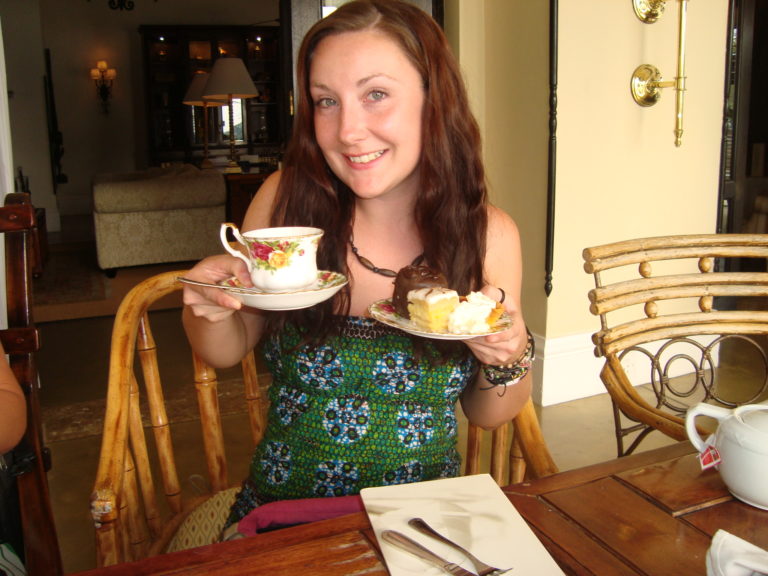
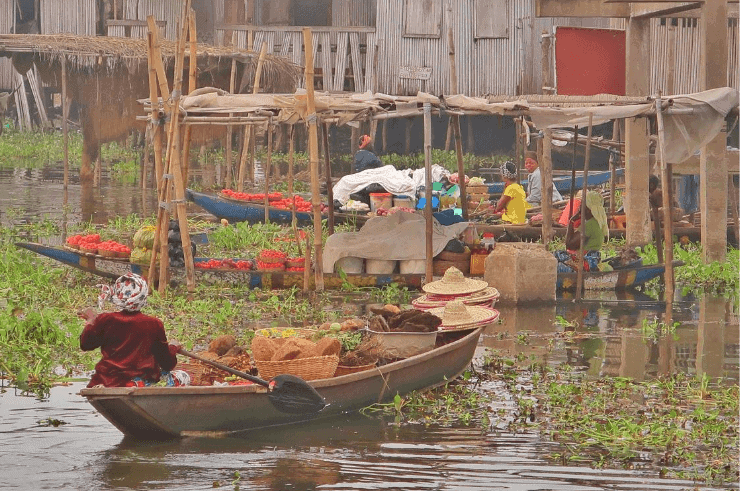
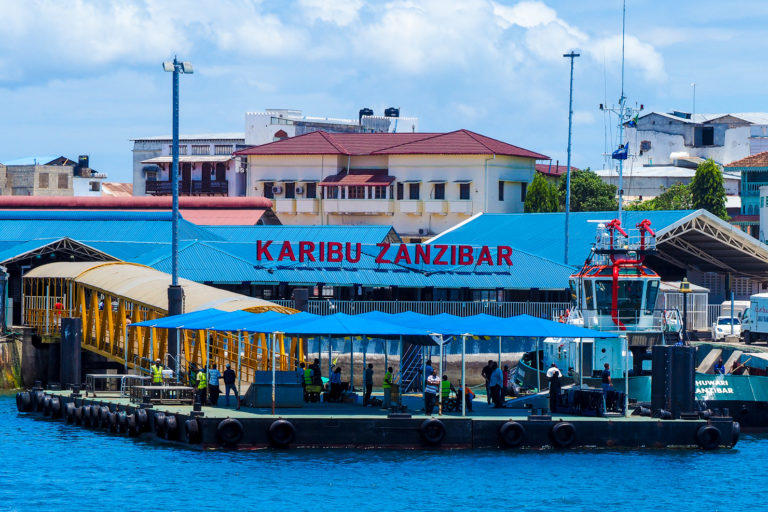
Hello,
Great article, wery helpfull! Can you please tell me where best to stay in The Kalahari Desert area? I think there was a link in your post but not working any more.
Thanks!
Bagatelle Ranch is a good place! The link in the post is working fine! 🙂